BIOLOGY FORM 3 & 4
OPEN HERE
Topic one:
GROWTH
Concept of Growth
The concept of Growth
Explain the concept of growth
Growth is an increase in size/mass or growth. It is the progressive development of living thing, especially the process by which the body reaches its point of complete physical development.
The growth process is not a steady one; sometimes growth occurs rapidly, at other times slowly. Individual patterns of growth vary widely because of differences in heredity and environment.
When the rate of cell increase is higher than the rate of cell loss, growth is referred to as positive growth. When the rate of cell increase is lower than the rate at which cells are lost from the body, the organism decreases in size and weight. This is also referred to as negative growth. Several factors are known to affect growth example nutrients, temperature, light and hormones.
Internal and External Factors Affecting Growth in Plants and Animals
Investigate internal and external factors affecting growth in plants and animals
Growth in plants and animals is influenced by a number of factors, which can be grouped into two categories: internal and external.
Internal factors affecting growth in humans
These are the factors which are associated with genetic make up of an organism plus all the other processes which take place in the organism’s body. These factors include the following:
Heredity:A person’s physical development is strongly affected by their genes inherited from their parents. Parent’s genes predetermine the limits of an individual’s height and other characteristics including the variability in eye colour, hair colour, body composition, and skin tone.With physical attributes such as height, parents’ genes dictate the range of height their offspring can obtain. The variability in height is a result of many external factors in the environment including nutrition and events during the child’s growth.
Hormones:Human growth is affected by biochemical products such as hormones. Hormones are regarded as growth-promoting substances. Probably all the endocrine glands influence growth. Most of the hormones are secreted by the endocrine glands and play a significant role in regulating the pattern of growth and development as per instructions of the genes. Examples of these hormones and their actions are as follows:
Somatotrophin:The most important hormone controlling growth from birth up to adolescence is growth hormone or somatotrophin. This is a polypeptide secreted by the pituitary. It helps in growth of bones and thereby increases the height of persons. It also causes an overall growth rate of most of tissues including brain.
Thyroid hormone:This hormone plays a vital role throughout the whole period of growth. The activity of the thyroid decreases gradually from birth to adolescence. In low secretion of the hormone, skeletal maturity, dental maturity and growth of the brain are all affected. During adolescence a new phase of growth occurs under the control of steroid hormones secreted by the adrenals and gonads. The gonads of both sexes secrete estrogens in small quantities from the time of birth onwards. At puberty the oestrogen level rise sharply in girls and to a much more limited extent in boys; the sex differences is possibly due to an inhibitory hormone secreted by the seminiferous tubules of the testicle.
Testosterone:Testosterone, produced by the testicle, is important in stimulating growth and it is responsible for the greater growth of muscles.
Gonadotrophins:Gonadotrophins are responsible for the growth of the ovaries and testis, and later on, the secretion of estrogens and testosterone responsible for the growth and development of secondary sex characters.
External factors affecting growth in humans
Growth is also affected by external factors which include the following:
Nutrients:Growth is closely related to nutrition. A sufficiency of food is essential for normal growth. An adequate supply of nutrients is naturally essential for the normal growth of humans and the need varies with the phase of development. For example: Zinc plays a part in protein synthesis and is a constituent of certain enzymes. A deficiency of zinc causes stunting, interference with sexual development and falling out of hair; Iodine is needed for the manufacture of the thyroid hormones; Bone will not grow properly without an adequate supply of calcium, phosphorus and other inorganic constituents such as magnesium and manganese; Iron is required for the production of haemoglobin; Vitamins play an important part in growth. Vitamin A is thought to be control the activities of osteoblasts. In vitamin C deficiency the intercellular substance of bone is inadequately formed. Vitamin D deficiency is the cause of rickets. Malnutrition during childhood delays growth, and malnutrition in the years proceeding adolescence delays the onset of the adolescence. Malnutrition may also result to diseases which decrease the appetite or interfere with digestion and assimilation. A majority of malnourished children fail to achieve their full genetic potential of body growth and are thus stunted or wasted or both.
Diseases:Diseases are alteration of the normal body functions, disorders or morbid conditions of the mind. Diseases slow down growth in humans and other animals. A child that suffers from diseases very often is likely to have his growth stunted or retarded. Such a child may end up having a small body or deformed body parts.
Cultural factors:The physical growth of human beings is definitely affected by cultural factors. Culture differs from ethnic group to ethnic group. The body growth differences correlate with varied cultural groups. The physical growth of the body follows some adaptations in different geographical areas of distribution of the groups.
Socioeconomic factors:Socioeconomic influence on human growth is also a well known factor. Children from different socioeconomic levels differ in average body size at all ages. It is clear that growth of the children and adults in those families with good financial status is always good compared to the case in poor families. However, growth differences are more closely related to the home conditions than to the strictly economic status of the families.Size of family exerts an indirect influence on the rate of growth. In a large family with limited income the children do not get proper nutrition. As a result the growth is affected. The number of children in the family exerts an effect on the children’s rate of growth. Children in large families are usually smaller and lighter than children in small families. Possibly this is because in large families children tend to get less individual care and attention.
Internal factors affecting growth in plants
The internal factors that influence plant growth include following:
Hereditary factors
Heredity factors are internal factors that affect the growth of plants. They affect the physical appearance and the size of a plant
Hereditary units called genes are found in chromosomes inside the nucleus of all plant cells. These units control the various characteristics of plants such as flower colour number of floral parts, growth pattern and so on. Genes are passed from parents to off spring. For example, tall plants produce tall offspring and short plants produce short offspring.
Growth hormones
Certain hormones such as growth hormones are known to affect growth. Hormones are chemical substances that influence physiological processes. Drastic changes in their concentrations in the body will, therefore, affect growth.
There are several known growth hormones. Some of them, like auxins, cytokinins are growth-promoting while others like abscissic acid and ethylene are growth inhibitors. Most of the growth regulators are synthesized by plants while a few are synthetic in nature.The table below summarizes the role of certain plant hormones on growth of plants and seeds.
Hormone Role in plant growth
Indoleacetic acid(IAA)—the main auxin. Other three auxins seem to have rather marginal importance for plants in natural environments.
Promotes cell division
Promotes cell enlargement
Promotes response of shots and roots to stimuli such as light, water and gravity
Promote growth of adventitious roots
Induces parthenocarpy (formation of fruits without fertilization)
Causes formation of the abscission layer at the base of the leaf stalk, leading to falling of leaves (abscission).
Inhibits development of lateral buds, thus promoting apical dominance
Causes formation of callus tissue. Callus tissue forms at the site of an injury to bring about healing in the plant.
Controls division in the vascular cambium and xylem differentiation.
Used as the rooting hormones in stem cuttings.
2-4 D is used as an herbicide to kill broadleaf, dicotyledonous weeds.
Promotes flowering in pineapples.
Gibberellins
Promote cell division and elongation of internodes in dwarf plants.
Induce parthenocarpy by initiating formation of indoleacetic acid (IAA)
Promote lateral bud development
Inhibit development of adventitious roots
Inhibit formation of the abscission layer on the leaf petiole
Promote germination of seeds
It helps in inducing seed germination by breaking seed dormancy and initiating the synthesis of hydrolases enzymes for digesting reserve food.
Cytokinins
Stimulate cell division
Stimulate formation of callus tissue
Promote flowering
Break seed dormancy
Promote formation of adventitious roots
Promote development of lateral buds by inhibiting apical dominance.
Low concentration of clytokinin induces cell elongation and causes ageing of leaves
Help in the production of new leaves, chloroplasts, and adventitious shoots.
Help in delaying senescence by promoting nutrient mobilisation.
Ethylene (ethane)
Promotes ripening of fruits
Causes formation of callus tissue, leading to falling of fruit and leaves
Stimulates thickening of the stem while inhibiting stem elongation
Helps in breaking seed and bud dormancy.
Promotes root-growth and formation of root hairs.
Abscisic acid (ABA)
induces seed dormancy by inhibiting seed germination, growth of stems, and sprouting of buds
Causes fruits and leaves to fall (abscission)
Promotes flowering
Stimulate apical dominance by suppressing development of lateral buds
Stimulates stomatal closure during water stress
Indolebutyric acid Synthetic plant hormone that promotes elongation of stems and roots
Apical dominance
An apical bud is found at the top of the plant. Apical buds are responsible for increase in plant’s height (apical growth). Lateral buds are found on the sides of the plant. Lateral buds are responsible for the formation of branches. Apical dominance is the inhibition of the growth of lateral buds by the presence of the growing apical bud. Apical dominance causes plant shoots to have a conical shape.
The apical bud produces auxins that diffuse to the lower parts of the plant. These auxins retard the development of lateral buds. The lateral branches of such a plant are short. A plant that has strong apical dominance gains more height in comparison to its width. Thus the plant assumes a conical outline.
Cutting the apex of the shoot causes the lateral buds to sprout. The dominance is overcome since the source of auxins at the apex is removed. The lateral buds sprout, branches develop, and the plant assumes an umbrella shape. Tea bushes are pruned so that they can develop many side branches. Rose plant, cypress and bougainvillea plants are pruned so that they can make a good hedge.
External factors that affect growth in plants
The external factors that affect plant growth include light, nutrients, temperature, relative humidity, water, carbon dioxide and oxygen, soil condition, biotic factors, and pollutants. Each of these factors is explained in detail below:
Light:The effect of light on growth can be studied under three headings: light intensity, light quality and duration of light. Growth is generally favoured by darkness, but light is necessary because of its role in the manufacture of food. Young plants growing in the absence of light develop elongated thin stems with narrow leaves and poorly developed shoot system. Such plants are said to be etiolated.In weak intensity of light the internodes are short and the leaves are expanded. In strong intensity of light, the plant assumes a normal height. Very low light intensity reduces the rate of overall growth of the plant, by lowering the rate of photosynthesis.Growth in full spectrum of visible light is found to be better than the growth in any one of the different colours of light. Red colour seems to be the most favourable for growth.The duration of light has a pronounced effect on the growth of vegetative as well as reproductive structures. The influence of duration of light is most marked in inducing or suppressing flowering. This phenomenon is termed as photoperiodism.
Nutrients:Availability, quality and quantity of food substances will automatically affect growth. For growth to occur in living things, food must be broken down to release energy. In areas where nutrients and water are adequate, competition is reduced and population increases. In case of shortage of nutrients and water, competition sets in and most individuals die.There are different mineral nutrients required for optimum plant growth. These nutrients are classified as either macronutrients or micronutrients. Macronutrients are those nutrients required by plants in high doses while micronutrients are the nutrients required in small quantities. Examples of macronutrients include nitrogen, potassium, magnesium, calcium, phosphorous and sulphur. Micronutrients include iron, zinc, molybdenum, manganese, boron, copper, cobalt and chlorine.
Temperature:Atmospheric and soil temperatures are very crucial for plant growth as it affects many plant processes such as photosynthesis, metabolism, respiration, transpiration, breaking of seed dormancy, seed germination, protein synthesis, translocation, and flowering. At high temperatures the translocation of manufactured food is faster so that plants tend to mature earlier.Growth can take place between 0°C and 50°C. But the optimum temperature for the growth is between 20° and 30°C. Low temperature, however, is necessary for many plants to flower. Different physiological processes such as photosynthesis and respiration are controlled by enzymes. The enzymes are affected by temperature and pH. Enzyme activity and the rate of most chemical reactions generally increase with rise in temperature. Up to a certain point, there is doubling of enzymatic reaction with every 10°C temperature increase. But at excessively high temperatures, denaturation of enzymes and other proteins occur.It follows, therefore, that drastic changes in temperature and pH will affect growth.
Relative humidity:Relative humidity (RH) is the amount of water vapour in the air, expressed as the proportion (in percent) of the maximum amount of water vapour it can hold at certain temperature. For example, an air having a relative humidity of 60% at 27°C temperature means that every kilogram of the air contains 60% of the maximum amount of water that it can hold at that temperature.The relative humidity affects the opening and closing of the stomata which regulates loss of water from the plant through transpiration as well as photosynthesis. Transpiration is slower in humid conditions. This is because diffusion of water vapour out of the leaf slows down if the leaf is already surrounded by moist air.
Water:As mentioned earlier, water is a primary component of photosynthesis. It maintains the turgor pressure or firmness of tissue and transports nutrients throughout the plant. In maintaining turgor pressure, water is the major constituent of the protoplasm of a cell. By means of turgor pressure and other changes in the cell, water regulates the opening and closing of the stomata, thus regulating transpiration. Water also provides the pressure to move a root through the soil. Among water’s most critical roles is that of a solvent for minerals moving into the plant and for carbohydrates moving to their site of use or storage. Gradual evaporation of water from the surface of the leaf near the stomata helps stabilize plant temperature.
Carbon dioxide and oxygen:The oxygen and carbon dioxide in the air are of particular importance to the physiology of plants. Oxygen is essential in respiration for the production of energy that is utilized in various growth and development processes. Carbon dioxide is a raw material in photosynthesis. However, a high concentration of carbon dioxide reduces growth because of its effect on the closing of stomata, and maintenance of dormancy. If the concentration of carbon dioxide in the plant leaf is higher than the surrounding air, the stomata will open to let in more of the gas from the surrounding air so as to balance the equilibrium of the gas between the two media (air and leaf air spaces). The opposite is the case if the concentration of the gas is higher in the air than in the leaf.
Soil condition:The characteristics of soil play a big part in the plant's ability to extract water and nutrients. If plants are to grow to their potential, the soil must provide a satisfactory environment for plant growth.Plant growth is influenced by the soil properties such as texture or structure, salinity, acidity, waterlogging, or compaction.
Biotic factors:Diseases, plant pests, weeds and harmful substances released by roots (allelopathy) affect plant growth drastically. Weeds compete with plants for moisture, nutrients, and light. Root knot nematodes reduce absorption, so more fertilizer is necessary. All of these have negative impacts on plant growth and development.
Pollutants:Pollutants can hamper plant growth. Many pollutants composed of poisonous gasses (such as carbon monoxide, sulphur dioxide, hydrogen fluoride, hydrogen sulphide) are capable of restraining growth, even bringing plants to death. Pollutants from household or industrial wastes are also able to restrain plant growth.
Mitosis and Growth
The Concept of Mitosis
Explain the concept of mitosis
Mitosis is the process of cell division whereby the chromosome are duplicated and distributed equally to the daughter cell.
The process of mitosis takes place in several stages, which are described below. The diagrams illustrate the stages showing a simple cell with four chromosomes.
Stages of Mitosis
Illustrate stages of mitosis
PROPHASE
This is the first stage of mitosis. In the early stages thread-like structures appear in the nucleus. These structures are the chromosomes. With time the chromosomes shorten and thicken. Then each of them splits longitudinally into two structurechromatids.Each of the chromatids is held together at a point calledcentromere.
Diagram of early prophase
As the chromosomes become visible, other events tae place. The nuclear membrane and the nucleus gradually disappear and a network of fibers appears in the cytoplasm. This network of fibers is referred to as spindle.
METAPHASE
Prophase is followed by metaphase stages. The nuclear membrane has disappeared completely by the cell and become arranged. The centromere of each pair of chromatids is attached to a spindle fiber.
Diagram of metaphase
ANAPHASE
During anaphase the centromere splits and the sister chromatids separate from each other (see figure below). Once the sister chromatids separate from each other, each is referred to as chromosome. It follows, therefore, that at this stage the chromosome number in the cell has doubled. Then the chromosomes begin to move towards opposite sides of the cell. The movement is in such a way that an equal number of chromosomes move to each pole of the cell.
TELOPHASE
Telophase begins when chromosomes reach the poles of the daughter cells. Many events in the telophase are the reverse of prophase. The chromosomes uncoil the nuclear membranes around daughter nuclei appear, the spindle apparatus break down and the nucleus reappears and nuclear membrane forms around each mass of chromosomes.
CYTOKINESIS
Telophase is followed by a stage calledcytokinesis. This is the division of cytoplasm. In plant cells a delicate membrane called a cell plate starts to form in the middle of the cell. Finally a new cell wall forms on either side of the plate. In this way, two new daughter cells are formed. In animals cells the cell membrane pinches the cytoplasm at the middle of the cell until two daughter cells are formed. Cytokinesis is completed as telophase ends.
The Significance of Mitosis in the Growth
Explain the significance of mitosis in the growth
SIGNIFICANCE OF MITOSIS IN GROWTH
Mitosis results in the formation of two identical daughter cells
The daughter cells are also identical to the parent cells because each daughter cell has the same number of chromosomes as that found in the original cell
Mitosis enables an organism to increase in size and maintain the same number of chromosomes in its body cell
Mitosis is also important for the replacement of worn out or damaged cells example in the lining of the gut and the surface of the skin
Mitosis alone does not bring about growth, when the cell divides the two daughter cells are initially only half the size of the parent cells.
The new cells must take in more materials to form the additional cytoplasm to produce fully-grown cells.
Growth and Developmental Stages in Human
Growth and Development in Human being
Explain growth and development in human being
Growth is irreversible increase in size. It is usually accompanied by cell division. Growth can be shown by increase in mass, length, surface area and numbers. Development refers to increase in complexity and differentiation of tissues and organs.
Human growth and development are lifelong processes of physical, behavioural, cognitive, and emotional growth and change. At every stage of life, there are physical and psychological changes in the human body. The process takes many years and a person goes through many different growth stages to reach adulthood, the final stage of development. Although every person experiences growth and development uniquely, the patterns are similar for all humans as shown in the growth curve below. In this particular graph, the selected growth parameter measured is height.
The Stages of Human Post–natal Growth and Development
Explain the stages of human post–natal growth and development
Growth and development in humans can be prenatal or postnatal. Prenatal growth and development takes place in the womb before a baby is born. Post natal growth and development occurs after the baby is born.
Even though the terms growth and development are used interchangeably, there are specific differences between them. We can sum up the differences between growth and development in the following table.
Growth Development
Growth refers to increase in size, height, weight etc. Development refers to improvement in the functioning of the body process
Easily measured and observed Cannot be measured easily
It is limited. Starts with birth to reach the maximum at maturity A continuous, unending process all through life.
Limited to specific areas Concerned with various aspects and parts of body and behaviour as a whole
Quantitative change Qualitative and Quantitative change
Human beings and other mammals show limited growth. Limited growth is growth that ceases at maturity. In these cases, therefore, the growth curve flattens or even declines prior to death. The decline is due to decline in smooth functioning of the organism, culminating to death. This is called senescence.
Other mammals and plants grow throughout their lives. This type of growth is called unlimited growth.
Lymph tissue grows very fast in early human life so that it produces a lot of white blood cells to fight infection (because the immune system is not able to fight infection). This type of growth in which organs grow at different rates is called allometric growth.
The post-natal period is a period beginning immediately after the birth of a child. The human post-natal growth and development may be divided into five phases or stages. These different stages of post-natal growth are summarised in the table below:
S/No Stage Age span
1 Infancy From birth to two years
(i) Neonatal From birth to 4 weeks
(ii) Older baby From 6 to 12 months
(iii) Toddler From 1 to 3 years
2 Childhood From 3 to 12 years
(i) Early childhood From 3 to 6 years
(ii) Late childhood From 7 to 12 years or in strict sense up to the onset of puberty
(iii) Pre-adolescence From 10 to 11 years
3 Adolescence From 13 to 19 years or in a strict sense from onset of puberty till the attainment of maturity
4 Adulthood From 20 to 60 years or in strict sense from attaining maturity to the age one ceases to produce one's own kind
(i) Early adulthood From 20 to 40 years
(ii) Late adulthood From 40 to 60 years
5 Old age or ageing (senescence) From 60 years or in a strict sense from the end of the reproduction capability stage till death
NOTE: The age spans at which different stages of human growth and development occur are very confusing! So don’t stick your mind to the age spans because there are no defined ages at which each stage exactly occurs. For example, the term infant is typically applied to young children between the ages of 1 month and 12 months; however, definitions may vary between birth and 1 year of age, or even between birth and 2 years of age. The same case applies to the definition of a toddler. There is simply no consensus about what constitutes a toddler. That said, rough estimates about when toddlerhood begins vary greatly and are widely accepted in the medical literature. Some will define a toddler as an infant between the ages of 1 and 3. However, some literatures define a toddler as an infant between 1 and 2 years. Confusing!
Physiological, Psychological and Behaviour Changes Associated with Growth and Development
Explain physiological, psychological and behaviour changes associated with growth and development
In each of the above stages, various physiological, psychological and behavioural changes take place. The changes that occur in each stage are explained in detail below:
Infancy
An infant (from the Latin word infans, meaning "unable to speak" or "speechless") is the very young offspring of a human or animal. When applied to humans, the term is usually considered synonymous with baby, but the latter is commonly applied to the young of any animal. When a human child learns to walk, the term toddler may be used instead.
Infancy is a period from 0-2 years. The child undergoes physical growth at a rapid rate, greater than he will never experience subsequently. It is interesting to know the changes that take place in the first two years. Children at this stage are very active learners. During this period the baby’s physiological processes become operative and fairly well adjusted.
The infancy stage is divided into three sub-categories: (i) neonatal, (ii) older baby, and (iii) toddler.
Neonatal
Neonatal stage is the stage from birth up to 4 weeks. New babies are also called neonates.
Physical and physiological changes
At this stage babies are helpless but can behave in a number of ways such as crying, moving their arms, legs and head. They can also stretch and make other movements. Baby movements are called reflexes. Examples of reflexes include moving arms, legs, and head, swallowing, and sucking.
Babies at this stage suck anything put in their mouths. They can also grasp objects put in their hands.
Neonates can see, but only a short distance of about 20cm. They can also hear, smell and feel. They spend most of their time sleeping.
The shape of a neonate changes significantly from birth to 4 months. Initially, the head and the abdomen are bigger compared to other body parts. The body becomes proportional as the baby grows up.
The immune system is immature and the baby depends on the immunity from his or her mother through breast–feeding.
The baby can sit with support and can respond to sounds, for example, smiling upon hearing her mother’s voice.
The rate of heart beat at this stage is very high.
Behavioural and psychological changes:Babies at this stage express their feelings mainly through crying. They cry to show hunger, thirst, pain, tiredness, fear and discomfort such as wet nappies, cold, a lot of heat, and sickness.
Older baby
This is the stage from 6 to 12 months.
Physical and physiological changes
At six months a baby can completely control his/her head and sit without support. They can also roll over.
At 7 months the baby learns to crawl. The baby can use his or her hands to throw and point at things he or she wants using his or her index finger.
He or she can hold and drop objects and stand while holding things like tables or chairs.
Teething occurs at this period.
From 9 to 12 months the baby starts to walk.
At this stage the sight has improved and the baby can focus on far objects and can recognize people at a distance.
Behavioural and psychological changes:The baby responds to his or her own name and other words that are familiar to him. Social development also occurs at this period. For example, at 9 months, a baby can distinguish strangers from familiar people. At 1 year, he or she understands and obeys simple commands like “come”, “go”, “stop”, etc.
Toddler
This is the age between 1 to 3 years.
Physical and physiological changes
Brain develops by 90%.
The rate of heart beat is reduced to about 90-110 times per minute.
The child is able to control urination and defecation as urinary and anal sphincter control become possible.
Immune system becomes mature.
The baby can see everything that an adult can see.
The baby shows sense of colour.
All the 20 milk teeth appear by the age of 2.5 to 3 years
Hearing has developed well.
Psychological and behavioural changes
At 12 to 14 months, the child uses gestures to express his or her feelings, for example, raising arms when he or she wants to be picked up.
At 15 months, the child copies what adults do. For example, a child may imitate cooking by taking a spoon and stirring it in a bowl.
At 15 to 18 months, a child feeds himself or herself, addresses others with greetings, climbs onto furniture, for example bed or couch and speaks a few words.
At 19 to 24 months, a child likes to play with other children (socialization), he or she can dress and undress himself or herself, run or climb steps and wants to be independent at times. He or she throws a tantrum (angry) or possibly says “No”. The child has also increased his or her vocabulary up to 50 words and starts toilet training. He or she mimics social behaviours such as holding and feeding a toy.
At 25 to 36 months, a child can play with other children and share playing toys, can speak in a sentence, is more independent, can differentiate boys from girls, shows preferences such as clothes and type of toys or games and knows how to play different games. Emotionally, children may feel jealousy, for example, towards a newborn baby. They also show fear for particular things for instance fear of some insects and fear of the dark or scary noise like thunder.
Childhood
Childhood is a period from 3 years to 12 years. The stage may be divided into three stages: (i) early childhood (ii) late childhood and (iii) pre-adolescence.
Early childhood
The early childhood years, 3-6 years of age, represent a remarkable period of physical and psychological developments. It is a period when true personality begins but physical development proceeds at a slower rate. Here children become more self sufficient, acquire language, become a part of the group, become more co-ordinated and obtain a higher degree of self control. At this stage, children go to kindergarten.
Physical and physiological changes
A child has good appetite and therefore grows rapidly. Good appetite is important as children at this age are very active and play a lot.
The child can identify up to five colours.
Motor coordination has developed well, and therefore the child can walk, jump and skip. Fine motor skills have also developed and the child can draw simple figures.
Psychological changes
The child is very curious and imaginative.
He or she understands right and wrong.
He or she is curious about sexuality.
The child can speak fluently, and can tell his or her age and name and a simple story.
Late childhood
The stage of late childhood starts from the 7th year and goes on till the 12th year. You have already gone through this period. Can you list some of the characteristics of this period?
During this period, physical growth continues at a lower rate but intellectual and emotional developments are rapid and very complex as the child moves from home to the outside world. He begins to acquire basic skills of formal learning and develops certain social activities. During the greater part of late childhood, the child’s physical growth continues, but at a slower rate until it shows a sudden spurt as the child approaches adolescence. He is more attached to his peer groups and interested in social and group activities. During this period, school tasks contribute intellectual developments too. This is the age from 7 to 9 years. At this stage children are in primary school.
Physiological and physical and changes
Growth remains steady
Children are very active
Psychological and behavioural changes
The child can assume simple responsibilities like looking after the house when parents are not at home.
The child is very social and likes to socialize and belong to groups
He or she can help with household duties like washing dishes, setting the table and fetching water.
The child likes to associate with peers of similar interest.
This is the time children have friends and best friends. However they prefer friends of the same sex.
Children at this stage can listen to peer’s opinion, but still value opinions of their parents
Pre-adolescence
This is the age from 10 and 11 years
Physical and physiological changes
Growth starts to increase
Appetite increases
Secondary sexual characteristics start to show, for example, growth of breasts and growth of pubic hair and armpit hair.
Psychological changes
Children still prefer friends of the same sex
They start to become independent from the family.
Children are very social and tend to value peers, opinions.
Services required to meet the needs of Children
The services required to meet the needs of a child can be categorized into two: essential or basic services, and supportive services. Essential or basic services are necessary for a baby’s survival. Supportive services are services that will help a child to grow well socially, emotionally and mentally.
Supportive services include love, care and comfort, security, and training of habits and skills. Older children need to be disciplined, trained to be independent and useful to others and be responsible.Basic services include healthy food, warmth, shelter, clothing, protection against illness and injury, exercise and rest.
Healthy food:Well-balanced nutrition plays a major role in the growth of children. Healthy and well-balanced food should be given to children for good physical and mental growth.The improvement of strength, height, growth of muscle, bone tissue and body resistance is completely dependent on the diet that children eat. Children need balanced diet; they need to feed on food rich in proteins, vitamins, minerals, carbohydrates, fibre and fat in adequate proportions.Children are normally addicted to junk food, which only harms their young bodies. Bad food habits at this age can make children obese, more prone to heart diseases and other major health risks.Parents should make sure that their children are fed on energy-giving foods as well as vitamins, minerals and proteins. Children should not be provided with junk food which contains harmful cholesterol and fat that can impair the baby’s health.
Protection against illness and injury:Some diseases and injuries may affect babies before they are born, at birth, or after birth. These may affect some parts of the body like the brain such that the child may become paralyzed or mentally retarded. Blindness, for instance may affect the development of physical and social capabilities of children. There are medical cases where diseases and injuries have caused a great deal of disabilities to children. Babies need to be immunized against some prevalent diseases such as tuberculosis, measles and polio.
Exercise and rest:A child’s body also needs exercise. Exercise makes muscles strong. It also improves flexibility and makes the heart, lungs and other body parts work efficiently. Playing is a form of exercise. While the body needs exercise, it also needs rest. Muscles get tired when they are overworked. Sleep is a form of rest for babies. Children need enough sleep for proper growth.
Warmth:Babies need warmth for proper functioning of their bodies. If babies are kept in places that are too cold, they suffer from hypothermia. If kept in too hot environment, they may develop heat rush and dehydration, and may even die. Therefore, adequate warmth is important for proper growth and development of children.
Shelter:Children need a home where they can live, be nurtured, play, and be protected against harsh environmental conditions such as cold and rain. The home should be spacious, clean and safe.
Adolescence
Adolescent period follows late childhood and extends from the age of 13 to 19. Normally, girls reach adolescence earlier than boys of their age. Very often it is called the awkward age because of awkwardness, clumsiness and accompanying self consciousness which occurs frequently. During this time physical, mental, emotional and social developments are complete. It is considered as the last step in the long period of development which begins at the time of conception. By the end of adolescence, the individual is considered legally and socially matured. He is capable of living an independent life free from supervision and guidance.
Physical changes in an adolescent
During adolescence, the bodies of both girls and boys produce hormones which control many physical changes. These changes include the following:
Rapid growth in weight and height.
They become very energetic and active.
Hair grows in armpits and groins of both boys and girls. Boys also grow beards and some grow hair on their chests.
Girls start to get the menstrual flow (monthly period). Initially the flow is irregular, that is, it may not occur every month but after a few months it starts appearing every month.
The breasts also start to grow bigger in girls. The monthly period onset in girl marks the puberty stage which indicates that such as person is able to become a parent. This is why girls even below 12 years of age become pregnant because they produce mature ova.
Boy’s sex organs enlarge and they occasionally emit some fluid from the penis at night (wet dreams). Wet dreams indicate that the boy has reached puberty and is capable of becoming a parent. Puberty onset is the beginning of adolescent stage.
Boys deepen their voice gradually while girl voices become mellow.
Some adolescents (boys or girls) develop pimples (acne) on the face but the pimples clear later on.
Psychological and behaviour changes at puberty
Adolescence is characterized by a number of physiological, psychological and behaviour changes.
The changes can be a cause of conflict on one hand and positive personality development on the other hand. For example, adolescents tend to view their friends and peers as more important and influential than their parents, guardians, teachers or elders.
Positive personality development includes opportunity to develop various social skills, such as empathy, sharing, leadership by peers and positive influences on an individual, for instance on academic motivation and performance.
When adolescence is not handled properly, negative influences such as experimentation with drugs, alcoholism and stealing may occur. Susceptibility to peer pressure increases during early adolescence but it peaks at around age 14 and declines thereafter.
Onset of puberty is also characterized by sexuality and sexual desire. Therefore education on reproductive health is very important at this stage as adolescents may find themselves contracting sexually transmitted diseases, HIV and early pregnancies.
Personal hygiene during adolescence
As stated above, adolescents are very active and energetic and are thus bound to sweat a lot. It is important that they bathe daily and change into clean clothes.
When bathing, one must pay extra attention to genitals, armpits and areas between the toes.
If the armpits sweat a lot, shave the pubic hair to reduce warmth and sweating. After bathing, apply deodorant to kill germs and prevent foul smell (there are deodorant for men too). For sweaty feet, clean between the toes, dry well and, if it can be afforded, dust the areas with talcum powder. The powder absorbs the sweat, prevents bad smell and athlete’s foot.
In case acne strikes, it should not worry anybody. Avoid breaking the pimples but just: (i) keep the face clean; (ii) avoid applying oil creams; and (iii) avoid diet that contains a lot of oil.
With time, acne disappears on its own. Breaking the pimple can cause black spots or infection. If it worries the individual to a point of wishing to have it treated, it is wise to consult a doctor.
At this stage avoid harsh creams as they may react with the hormones and lead to damaged skin. Boys need to keep their beards shaved. Girls need to bathe more than once during the menstrual flow to avoid foul smell of blood. They need to wear sanitary towels to avoid staining their clothes with blood. The sanitary towels must be changed regularly to avoid development of foul smell and growth of germs. If commercial sanitary towels cannot be afforded, home-made pads can be prepared with cotton wool covered with gauze or just folding
Services required to meet the needs of adolescents.
Adolescents require healthy food for their growing bodies. They also require a peaceful home, security, emotional support, counselling, physical exercise and social skills that will help them resist temptations from peers and live a better and accepted lifestyle.
Adulthood
Adulthood starts at 20-60 years. It is the longest period of the life span. During this stage physical developments are fairly complete. But psychological adjustments continue throughout the entire stage. Choosing a life partner, establishing a family, becoming a useful and productive member, etc. are crucial during adulthood. One’s personality and achievements are determined by the kind of experiences he has had during his early years of life. Adulthood can be categorized into early adulthood, middle adulthood and old age.
Early adulthood
Early adulthood (also called "emerging adulthood") is a stage of life between 20 and 40 years, when adolescents become more independent and explore different life possibilities. Early adulthood is also called young adulthood stage.
Changes during early adulthood
Growth has stopped, only maintenance of body parts, for example, repair of worn out cells takes place. A person may gain weight due to deposit of fats but not due to growth and development.
A this stage, people are in their best physical conditions, that is very strong, energetic, have good memory capacity, sharp senses, and stamina.
Performance of the body system is very high.
People at this stage are very ambitious and want to succeed. They work hard to meet their goals, for example to finish studies, get a decent job and / or start a family
They are selective in terms of choosing occupations or partners.
They have the desire to be socially independent.
Middle adulthood
Middle or late adulthood starts at 40 years and ends at 60 years. Initially, a person is still very strong and able to do tasks that require a lot of energy.
The performance of body stems is still high. Later, in the late forties or early fifties, the rate of deterioration becomes significant. The ability to do tasks that require a lot of energy and high speed decrease, sharpness of vision decreases and memory loss may occur.
Hair starts to turn grey, skin starts to loose elasticity. Women reach menopause and their desire to have sex is reduced.
Old Age
Old age starts from 60 years and over. It is considered as the final stage of the normal life span. During this period many physical, social, emotional and behavioural changes take place. Some men and women manifest signs which are associated with old age from their 60’s onwards. These aging years demand a higher degree of emotional adjustments.
There are certain problems of adjustments such as physical and economic dependency, establishing new contacts and interests and activities to occupy increased leisure time. Psychological hazards during this stage include feelings of inferiority and inadequacy resulting from physical changes in life patterns, feeling of guilt about sitting idle and reduced income that necessitates changes in living patterns. Financial worries and ill health are common among this age.
As a person ages, various changes occurs in his or her body until her or she dies. Some of these changes are explained below:
Decreased blood flow to the brain and death of nerve cells.
The ability to focus on objects, smell and hear decreases.
Hair turns grey as a result of reduced production of hair pigment. The hair also becomes thinner. Some men may develop a bald head.
Kidney functioning slows down and the frequency of urination increases.
Digestion slows down especially for those who get poor diet.
Elasticity of the skin decreases. The skin gets looser and wrinkles develop.
Bones may become weak, especially for those who have been taking food with less calcium in young age.
Men delay getting an erection.
By the age of 70, about two thirds of taste buds in the mouth die, making a person fell like food is tasteless.
The above features do not apply to all aged people. Healthy life style during young age may delay occurrence of the above features and make a person lead a normal life even in older age.A healthy life style is achieved by eating healthy food, avoiding smoking, alcoholism, overeating, drug abuse, excessive noise, toxic chemicals, stress and inactivity.
Services required to meet the needs of the elderly
Older people need healthy food to strengthen their immune system and reduce the rate of body deterioration. For very old people, the food should be soft enough for them to chew, swallow and digest.
They also need clean and comfortable clothing and a place to sleep and do light physical exercise. They need love, care, and support. Love, care and support help old people to avoid anger, loneliness and stress.
Factors which Affect the Rate of Physical Deterioration of Human Body and Services Required to Meet the Needs of an Individual at each Stage
Outline factors which affect the rate of physical deterioration of human body and services required to meet the needs of an individual at each stage
Some people may live a happy, health life up to their old age and until they die. Others get very old while they are still young.
Some of the factors affecting the rate of deterioration of the human body are psychological. They include smoking, alcoholism, drug abuse, stress and inactivity.
Some other factors are environmental. They include poor diet, excessive noise, toxic chemicals and radiations, diseases, and infections. Other factors are genetical, for example, the Werner’s syndrome.
Smoking:Smokers suffer more illnesses such as cancer than non-smokers. Smoking can cause lung cancer, cardiovascular disease, Chronic Obstructive Pulmonary Disease (COPD), and stroke. Smoking leads to premature balding, skin wrinkling and osteoporosis.Osteoporosis is a condition in which bones become thin and fragile, leading to fractures, stooped posture, breathing problems and back pain.
Alcoholism:The ability to metabolize alcohol decreases with age. Prolonged use of alcohol leads to damage of the central nervous system and brain and increases the risk of heart stroke and breast cancer for women.Alcoholism also increases the frequency of illnesses as it weakens the immune system and causes kidney failure and osteoporosis.
Drug abuse:Drug abuse weakens the immune system and causes premature aging. It thus reduces life span.
Stress:Stress may cause heart problems and high blood pressure. It also causes impairment of the immune system, thus making a person sick often. Other problems that may result from stress are failure to sleep (insomnia), fatigue, ulcers, headache and migraine.
Inactivity:Sedentary work and inactivity such as spending a long time watching TV or doing office work that involves sitting most of the time results in being overweight and its associated risks. It also shortens life span.People who are inactive have more chances of developing health problems such as obesity and high blood pressure than those who are active.
Poor diet:Poor diet includes both underfeeding and overfeeding. Underfeeding causes malnutrition which reduces life span. Overfeeding leads to obesity and diabetes. Obesity and diabetes cause premature aging.
Diseases and infections:Pathogens produce toxins that accelerate deterioration. They also deprive our bodies of the necessary nutrients needed for good health.
Chemicals and radiations:Some chemicals such as those found in cosmetics, medicines, insecticides, pesticides, foodstuffs and sprays may have adverse effects on the human body.These chemicals speed up deterioration or shorten life span. Some radiations, for example X-rays, may affect our lives by killing body cells or causing deadly diseases like cancer.
Werner’s syndrome:Werner’s syndrome is a very rare disease that causes rapid ageing after puberty, such that a 20 or 30 year old person may look several decades old. It is caused by gene mutation and is named after a German scientist, Otto Werner, who described the syndrome.
Growth in Flowering Plants
The concept of seed Germination
Explain the concept of seed germination
Germination is the process by which a plant grows from a seed. The most common example of germination is the sprouting of a seedling from a seed of an angiosperm or gymnosperm. Plant growth is said to be localized. In this case, growth is restricted to certain fixed regions like root tips and shoot tips. After the seed germinates, the embryo starts to grow as indicated in the figure below. The figure shows growth of a bean seedling between day 2 and 11.
Germination and growth of a bean seed
Changes which occur during seed Germination
Outline changes which occur during seed germination
There are changes that occur during seed germination. These are:
Seed absorb water and enlarge
Later on the testa bursts and the radicle emerges. The radicle continues to elongate and gives rise to many roots
As the radicle elongates, the plumule is curved. At this stage, young plant is called a seedling.
Accompanying these morphological changes are chemical changes which occur inside the seed. As the seed absorbs water the foods are hydrolyzed into soluble food. The starch stored in the cotyledons or endosperm is converted to sugar by action of diastase. In some seeds, lipase catalyzes the hydrolysis of fats to fatty acid and glycerol.
It is likely that glycerol is converted into sugars since it is not detected in germinating seeds. The proteolyctic enzymes catalyze the hydrolysis of proteins to amino acids.
During germination a lot of energy is required. This energy is derived from the stored food materials.It follows, therefore that as the seed germinates its weight decreases. This is because the stored food is being used. The decrease in weight continues until the seedling is capable of photosynthesizing.
Parts of a seed
A seed is a structure formed after the fertilization of an ovule. A seed contains the embryo of the plant. The embryo grows and develops into a mature plant which produces more seeds. The embryo is made up of the plumule, radicle and cotyledons. The plumule develops into a shoot. The radicle develops into a root. The cotyledons have nutrients which are utilized by the seed during germination.
Seeds have either one or two cotyledons. A seed with one cotyledon is called a monocotyledonous seed. Examples of monocotyledonous seeds are maize, rice, millet and wheat. A seed with two cotyledons is called a dicotyledonous seed. Examples are beans, peas and groundnuts
Seeds sometimes have additional nutrient tissues in form of the endosperm. The seed coat, also called testa, encloses the fertilized ovule. The testa has a pore called the micropyle. The micropyle allows water and air to get in and out of the seed.
On the testa is a scar called the hilum. The hilum marks the point of attachment to the funicle. The funicle attaches the seed to the placenta on the ovary wall.The plumule has small leaves. The leaves are the replica of natural leaves. A radicle is a replica of a mature root. The testa is hard and encloses the seed, hence protecting it.
The figures below show the parts of a monocotyledonous seed (maize) and a dicotyledonous seed (bean).
Conditions necessary for seed Germination
Investigate conditions necessary for seed germination
Seeds require certain conditions for them to germinate. These conditions are water, oxygen, optimum temperature and light.
Water
Water is a solvent required for enzymatic activities. Water enters the seed through the micropyle. The water softens the testa thus allowing the seed to take in water. The osmotic pressure in the seed causes water to enter the seed by osmosis. Pressure is created in the swollen seed, rupturing the softened testa.
The seeds require water for the processes outlined below:
Activation of enzymes: When seeds are formed, most plants store a food reserve with the seed, such as starch, proteins, or oils. This food reserve provides nourishment to the growing embryo. When the seed imbibes water, hydrolytic enzymes are activated and break down these stored food resources into metabolically useful chemicals.
Most seeds need enough water to moisten them. The uptake leads to the swelling and the breaking of the seed coat, which enables the embryo to emerge from the cotyledon(s).
Water is used to dissolve food substances. The food needs to dissolve so as to diffuse or get transported to the growth parts of the embryo in the seed.
Water is needed for the development of the cell sap vacuoles. Large cell sap vacuoles contribute to the increase in the size of cells, hence, growth.
Oxygen
Oxygen is required by the germinating seed for metabolism. It is used in aerobic respiration, the main source of the seedling's energy until it grows leaves. Respiration produces energy for processes like cell division and transport of food to growing regions.
Oxygen diffuses into the seed through the micropyle. The softened testa later allows oxygen to diffuse directly into the tissues.
Optimum Temperature
Temperature affects cellular metabolic and growth rates. Seeds from different species and even seeds from the same plant germinate over a wide range of temperatures. Seeds often have a temperature range within which they will germinate, and they will not do so above or below this range. Many seeds germinate at temperatures slightly above 16-24 °C.
Temperature is an important requirement for activation of enzymes. The enzymes in the seed work best at optimum temperature since they are denatured by high temperatures and inhibited by extremely low temperatures.
Some seeds may require to be first exposed to low temperatures before they can germinate. This is usually the case in plants that grow in temperate climates. The seeds need to go through winter before the onset of spring when the seeds germinate.
Light
The requirement of light for germination varies from plant to plant. Some plants need darkness while others need light in varying degrees.
Light or darkness can be an environmental trigger for germination and is a type of physiological dormancy. Most seeds are not affected by light or darkness, but many seeds, including species found in forest settings, will not germinate until an opening in the canopy allows sufficient light for growth of the seedling.
Types of seed germination
There are two types of seed germination namely, hypogeal germination and epigeal germination.
Epigeal germination
Epigeal germination is a type of germination in which the cotyledons are brought above the soil level. This type of germination is seen in many dicotyledonous plants, such as beans, sunflower, castor, bean, etc. Some monocotyledonous plants such as the onion also show epigeal germination.
In a dicotyledonous seed, the plumule and radicle are attached to the two cotyledons. The hypocotyl elongates rapidly raising the cotyledons into the air. The hypocotyl is the region of the stem beneath the cotyledons and directly above the young root of a seedling. The epicotyl is the region of the shoot of a seedling which is found above the cotyledon of an embryo.
The seed absorbs water and softens the testa. The cotyledons swell and rupture the testa. The radicle elongates and emerges through the seed coat. Roots develop from the radicle. The hypocoty elongates rapidly and develops a curvature. The curved part emerges above the soil. The hypocotyl eventually straightens, raising the cotyledons and the plumule above the soil. The cotyledons are also referred to as seed leaves.
The cotyledons enlarge and turn green to carry out photosynthesis. The epicotyl elongates thus increasing the height of the seedling. The first foliage leaves emerge. The cotyledons shrivel as the stored food materials are used up. The first foliage leaves enlarge and start carrying out photosynthesis.
Epigeal and hypogeal germination
Hypogeal germination
Hypogeal germination is a type of germination in which the cotyledons remain underground. It occurs in plants such as maize, pigeon peas, wheat, etc.
The part of the embryo that elongates is the epicotyl. The epicotyl elongates rapidly, raising the plumule above the soil. The cotyledons remain below the ground level.
The shoot is pushed through the soil particles. In maize, the plumule sheath, known as the coleoptile, protects the plumule. The coleotile grows towards light.
The foliage leaves emerge through the split end of the coleoptile. The foliage leaves carry out photosynthesis. The radicle is protected as it emerges through the maize grain by a sheath called coleorhizae.
Practical activities to demonstrate Epigeal and Hypogeal Germination
Carry out practical activities to demonstrate epigeal and hypogeal germination
Growth regions of a seedling
The growth of the radicle and the plumule causes the elongation of a seedling. A radicle develops and forms the roots, while a plumule develops and forms the shoot. The rate of growth can be measured at the tip of the root or shoot.
Cells at the root and shoot apices have a high capacity to divide. The dividing cells are called meristematic cells. The cells make up a tissue called the apical meristem. These cells rapidly undergo mitosis, thus enlarging and giving rise to more cells.
The very cells increase the size of the shoots and roots. The cells differentiate to form tissues that carry out specific functions.
The plant organs elongate, resulting in growth at the root and shoot apices. This type of growth is known as primary growth.
The meristematic tissue at the shoot apex actively divides, leading to the elongation of the shoot. The meristematic tissue also gives rise to leaves. Leaf primordia, from which the leaves develop, occur at the nodes of the shoots.
The part of a stem between one node and the next is called the internode. The axillary bud has meristematic tissue known as the intercalary meristem. The meristem tissue brings about internode elongation.
Topic two:
GENETICS
a) i) Define the term genetics
the study of heredity(inheritance) and variation or study of mechanisms by which characteristics are passed from parents to offspring
ii) List some characteristics which are inherited
size
height/length
colour/type
shape
yield
iii)State the importance of genetics
helps to explain differences between organisms of the same species
helps to explain the transmission of characters from generation‘ to generation
improvement in livestock
improvement in crops
can be used to treat some difficult diseases
b) i) Explain the meaning of the following terms
Heredity
the resemblance among individuals related by descent
transmission of traits from parents to offspring
Trait
also called character
A character of the organism e.g. type of ear, colour of eyes, height, yield etc.
Gene
unit of inheritance
it is the heredity factor which transmits traits from parents to offspring
genes are located at ‘fixed points on chromosomes
each point is called a locus (loci)
Allele
genes can exist in a series of alternative forms at a particular locus
allele refers to alternative forms of genes controlling a particular characteristic
Chromosomes
threadlike structures found in nuclei of all plants and animals
they carry genes which are hereditary materials
they consist of substances called DNA and proteins called histosones
DNA
deoxyribonucleic acid
substances that make up chromosomes
double helix(strand) molecule that contains genes
DNA consists of nucleotides
A nucleotide consists of an inorganic phosphate, ribose sugar and a base
There are four bases in a DNA molecule i.e. Adenine(A), guanine(G), thymine(T) and cystosine (C)
Ribose sugar has four bases attached to it i.e. adenine, cystosine, guanine and thymine
Adenine pairs with thymine while guanine pairs with cystosine
Nucleotide initiates and controls protein synthesis
ii) List the types of chromosomes
somatic (body) chromosomes also called autosomes
sex chromosomes (related to reproduction)
c) i) What is variation?
sequence of differences occurring among individuals of the same species
ii) State the causes of variation in organisms
random assortment of genes during meiosis
crossing over
fertilization
doubling of chromosome numbers(mutation)
environmental conditions
iii) Name the types of variation
Continuous variation (differences not clear cut) e. g. height, length, weight, skin colour, intelligence etc. They are quantitative and show intermediates
discontinuous variation(differences are clear cut) e. g. ability to roll tongue, ABO blood grouping system, RH factor, patterns of fingerprints, and ability to taste PTC. They are qualitative and have no intermediates
iv) Explain the following terms
Acquired characteristics
they are as a result of adaptations due to the environment and are not inherited Inherited characteristics
are passed down to offspring during sexual reproduction
Genotype
genetic constitution of an individual/genetic makeup
Phenotype
characteristics of an individual observed or discernible by other means i.e. observable character
Dominant gene (character)
expressed in the phenotype when homozygous or heterozygous
Recessive gene
only expressed in homozygous state
Homozygous
when two alleles are identical e.g. LL,ll
Heterozygous
when two alleles are different at a particular locus e.g. Ll
F1 and F2
Fl means first filial generation i.e. the first generation produced when two varieties can be crossed
F2 means second generation i.e. product of offspring or from F1 generation
d) i) Explain Mendels first law of inheritance
also called law of segregation
it states that genes are responsible for the development of individual characters
these characters are transmitted individually without any alterations
Only one character from a contrasting pair can be carried in a gamete, hence only one character can be inherited.
ii) Give an example of this law
In an experiment, Drosophila (fruit fly) with long wings were crossed with those having short wings. Assume letter L denotes gene for wing size. The gene for long wings is dominant to that for short wings
the genes for dominant are LL and for recessive ll.
State the expected results for the first cross
iii) What is monohybrid inheritance?
when inheritance of one character is studied one at a time e.g. wing size only
the F2 generation (when selfed) always gives a phenotypic ratio of 3:1 and a genotypic ratio of 1:2:1 in a complete dominance
i) What is complete dominance?
refers to where only one dominant character is expressed while the other character which is recessive is not expressed in the heterozygous state e. g. the case of wing size above e) i) What is meant by co dominance?
When genes produce independent effects when heterozygous/none of the genes is dominant over the other/where two or more alleles does not show complete dominance/recessiveness due to the failure of any allele to be dominate in a heterozygous condition.
ii) Give an example of co dominance
In a certain plant species, some individual plants may have only white, red or pink flowers. In an experiment a plant with white flowers was crossed with a parent with red flowers. Show results of Fl generation. Use letter R for red gene and W for white gene.
If the plants form F1 were selfed, work out the phenotype ratio for the F2 generation Phenotypic ratio 1 red:2 pink: 1 white
Genotypic ratio 1:2:1
f) i) What is a test cross?
A cross between an individual showing a character for a dominant gene(that is homozygous or heterozygous) with a homozygous recessive individual
OR
a cross between individual(organism) of unknown genotype with a homozygous recessive individual
ii) State the importance of a test cross in genetics
helps in determining the genetic constitution/genotype of an organism
iii) What are multiple alleles?
a set of more than two alleles that may determine a character
example is blood group which can be determined by any two of three alleles i.e. A,B and O
iv) Explain the inheritance of ABO blood groups
in humans blood groups are determined by three alleles i.e. A,B and O
it is only possible to have two genes at a time
genes A and B are co-dominant while gene O is recessive to genes A and B
Give a worked example using parents with heterozygous blood groups Ao and BO
ii) Explain the inheritance of Rhesus factor (Rh) in human beings
in humans blood is either Rh positive or Rh negative
people who have Rh antigen are Rh(+ve) while those without Rh antigen in their blood are Rh(-ve)
Rh(+ve) is due to a dominant gene while the recessive gene causes lack of Rh factor.
When a person who is homozygous dominant marries a person who is homozygous
recessive the result is as shown below
Let the gene for dominant Rh factor be R while gene for recessive be r
iii) How is sex determined in human beings .
there are two sex chromosomes in humans, x and y
males are xy and females are xx
in females all ova have x chromosome
in males 50% of sperms contain x chromosomes While 50% of sperms contain y
chromosome
when a sperm containing x chromosome fuses with an ovum this results into a girl
when a sperm containing y chromosome fuses with an ovum the result is a boy
an example is given below
g) i) What does the term linkage mean?
- These are genes which occur together on a chromosome and are passed to offspring without being separated ii) Define the term sex-linked genes
genes carried in the sex chromosome that are transmitted along with genes that determine sex
iii) What is meant by the term sex linkage?
genes are located on the sex chromosome
they are transmitted along with those that determine sex
iv) Name the sex-linked traits in humans
colour blindness
haemophilia
Hairy ears. pinna, nose
Baldness
Duchene muscular dystrophy (DMD) muscular wasting
v) Give an example of a sex linked trait in humans on:
Y Chromosome
tuft of hair sprouting from pinna/baldness
X Chromosome
colour blindness/haemophilia
vi) In humans red-green colour blindness is caused by a recessive gene C, which is sex- linked. A normal man married to a carrier Woman transmits the trait to his children. Show the possible genotypes of the children.
Let C represent the gene for normal colour vision (dominant)
Let c represent the gene for colour blindness
Parental phenotype Norman man x carrier woman
iv) State the importance of sex linkage
possible to determine sex of day old chicks
v) Haemophilia is due to a recessive gene. The gene is sex-linked and located on the x chromosome. The figure below shows sworn offspring from phenotypically normal parents
What are the parental genotypes?
XY and XhX
Work out the genotypes of the offspring
h) i) What is mutation?
sudden change in the structure of DNA at a particular locus/chromosome/ gene
ii) Describe how mutations arise
mutations arise due to alterations in normal number of chromosomes
change in a portion of a chromosome affecting one or more genes
by chromosomal aberration e.g. dleltion/duplication/substitution/inversion/translocation/crossing over
caused by mutagenic agents e. g. radiation (x-rays, ultra violet light, gamma rays) and chemicals e. g. mustard gas/colchicines
iii)State the factors that may cause mutation
these are chemicals and radiations
Radiations Effects
X-rays gene/chromosome alteration
Ultra violet rays structural distortion of DNA
Chemicals Effect
colchicines prevents spindle formation
Cyclamate chromosome aberrations
Mustard gas chromosomes aberrations
Nitrous acid adenine in DNA is deaminated so behaves like guanine
Acridone orange addition and removal of bases of DNA
Formaldehyde
iv) State the characteristics of mutations
arise suddenly
are unpredictable
random
generally rare
may breed true
some are desirable while others are lethal
v) Explain chromosomal mutation
- Change in nature, structure or number of chromosomes
vi) Explain how the following types of chromosomal mutations occur
Duplication
a section of a chromosome is repeated/replicates
therefore genes are repeated
Inversion
occurs when chromatids break at 2 places and when rejoining the middle piece rotates and joins in an inverted position
Deletion
portion of a chromosome is left out after it breaks off
alters number and sequence of genes
Translocation
occurs when a section of a chromatid breaks off and becomes attached to another chromatid of another chromosome
Non-disjuntion
Failure of homologous chromosomes/sister chromatids to separate/segregate during meiosis
Polyploidy
where number of chromosomes double or triple
beneficial in plants due to the following
increased yields/hybrid vigour//heterosis
resistance to pests
early maturity
resistance to drought
resistance to diseases
vii) What are gene mutations?
an alteration in the structure of a gene
i) Explain how the following occur during gene mutation
Deletion
some bases/nucleotides of a gene are removed
Inversion
the order of some bases/nucleotides of a gene is reversed
Insertion
addition of a base between two existing bases
Substitution
a portion of a gene is replaced by a new portion
ii) Name the disorders in humans caused by gene mutation
albinism
sickle cell anaemia
achondroplasia/chondordystorphic dwarfism
haemophilia
colour blindness
phenylketonuria
I. State the practical applications of genetics
i. Breeding programmes (research)
high yielding/hybrid vigour/heterosis
resistance to diseases
resistance to drought/salinity
early maturing
ii. Genetic engineering
genetic manipulation to produce desired characteristics
iii. Law
- legal questions of paternity knowledge of blood groups or blood transfusion
iv) Genetic counseling
aimed at reducing harmful traits e.g. albinism, congenital idiots, colour blindness e.t.c
v) Others
- Pre-sex determination
Understanding human evolution and origin of other species.
Topic three:
EVOLUTION
2. a) i) Explain the meaning of evolution
a gradual change in living organisms from simple life forms to more complex forms over a long period of time.
ii) Differentiate organic evolution from chemical evolution as theories of origin of life
organic evolution refers to the emergence of present forms of organisms gradually from pre-existing forms (some of which no longer exist)
chemical evolution explains the origin of life as having occurred when simple chemical compounds reacted to form the simplest life forms
iii) What is special creation?
maintains that the whole universe and all living organisms came into being due to the act of a supernatural being
b) Discuss the various kinds of evidence for evolution
i) Fossils
fossils are remains of organisms preserved in naturally occurring materials for many years
they give evidence of types of plants/animals that existed at certain geological age/long ago/millions of years ago
gives evidence of morphological/anatomical/structural changes that have taken place over a long period of time e. g. human skull, leg of horse
ii) Comparative anatomy
gives evidence of relationship among organisms/gives evidence of a common ancestry of a group of organisms
organisms have similar structures/organs performing the same function e. g. digestive system] urinary system/nervous system/vestigial structures and vertebrate heart
Divergence where the basic structural form is modified to serve different functions e.g. vertebrate forelimb/beak structure in birds/birds feet/parts of a flower. These are called homologous structures
homologous structures have a common embryonic origin but are modified to perform different functions e.g. the pentadactyl limb
adaptive radiation is a situation where organism have a homologous structure with common embryonic origin which is modified to perform different functions to adapt organisms to different ecological niches/habitats e.g. beaks of Darwinian finches(birds)
Convergence is where different structures are modified to perform a similar function e.g. wings of birds and insects/eyes of humans and octopuses. These are called analogous structures
Vestigial structures are greatly reduced in size and have ceased to function e.g. human appendix/caecium/coccix in humans, wings of kiwi (flightless bird), presence of hind limb pad in python, halters in insects, human hair nictitating membrane in human eye, human ear muscle, pelvic girdle in whale and third digit of wing of bird.
iii) Comparative embryology
some embryos of different animals appear very similar thus showing relationship and possibility of a common ancestry
e.g. different classes of vertebrates larvae of annelida and mollusca are similar (tocophere)
iii) Comparative serology/physiology
these show biochemical and immunological comparisons of blood groups/components to show immunological similarities of tissues therefore showing relatedness of different organisms
e.g. antigen antibody reactions, human blood groups/Rh factor reveal some phylogenic relationship among organisms/common ancestry
iv) Geographical distribution
organisms differ in various geographical regions
present continents are thought to have been a large land mass joined
together/pangea/Eurasia/Gondwanaland
present continents drifted apart from one land mass/continental drift
as a result of continental drift isolation of organisms occurred bring about different patterns of evolution
organisms in each continent evolved along different lines hence emergence of new species/divergence/convergence
Examples
marsupials in Australia
llama, jaguar, panther in S. America
lion, camel in Africa
I tiger in Asia
vi) Cell biology (cytology)
structures and functioning of cells are similar
occurrence of organelles e.g. mitochondria in all cells/both plant and animal cells
these point at a common ancestry
c) i) State the evolutionary characteristics that adopt human beings to the environment
- Brain
- Eyes
- Upright posture/bipedal locomotion
- prehensible arm/hand
- Speech
ii) State the ways in which Homo sapiens differs from Homo habilis
standing upright/erect posture
intellectual capacity/higher thinking capacity/bigger brain/higher brain capacity
communication through language/speech
d) i) Explain Larmarck’s theory of evolution
- Inheritance of acquired characteristics/environment induces production of a favorable trait which is then inherited
ii) Explain why Lamarck’s theory of evolution is not accepted by biologists today
- evidence does not support Lamarck’s theory
- acquired characteristics are not inherited/inherited characteristics are found in reproductive cells only
iii) Explain Darwin’s theory of evolution
- inheritance of genetically acquired characteristics
- a character happens to appear spontaneously which gives advantage to an organism therefore adapted then inherited through natural selection
e) i) What is natural selection?
- Organisms with certain characteristics are favoured by the environment
Such organisms tend to survive and produce viable offspring
Others not favored are eliminated from subsequent generations
ii) With examples, explain how natural selection takes place
- organism with certain characteristics are favored by their environment
- such organisms tend to survive and produce viable offspring
- others not favored are eliminated from subsequent generations
- as the environmental conditions change the survival value of a character may alter with time so that characteristics which were favored may no longer have advantage and other characters may then become favorable
- if a favorable character is inherited, then offspring produce generations which are better adapted to survive in a population
- more offspring are produced than can survive which results in struggle for survival - the fittest survive
iii) State the advantages of natural selection to organisms
- assist to eliminate disadvantageous characteristics/perpetuates advantageous characteristics
- allows better adapted organisms to survive adverse changes in the environment/less adapted organisms are eliminated
iv) State the ways in which sexual reproduction is important in the evolution of plants and animals
- brings about useful variations/desirable characters
- variations make offspring better adapted for survival/more resistant to diseases
- may lead to origin of new species
v) Explain the significance of mutation in evolution
- Mutation bring about variation which can be inherited
- Some of these variations are advantageous to the organism
- Others are disadvantageous
- The advantageous variations favour the organism to compete better in the struggle for survival
- This results into a more adapted organism to its environment or new species/varieties
- Those with disadvantageous characters will be discriminated against therefore eliminated from the population/death/perish
vi) Plain why it is only mutations in genes of gametes that influence evolution
- gametes form the new offspring
vii) How would you prove that evolution is still taking place?
- resistance of organism to antibiotics, pesticides and drugs
- new varieties of bacteria are resistant to certain antibiotics such as penicillin
- houseflies and mosquitoes are resistant to DDT
vii) Explain why some bacteria develop resistance to a drug after they have bee subjected to it for some time
- bacteria mutates/develops a new strain/chemical composition is altered hence is able to produce enzymes/chemicals which degrade the drug rendering it non-susceptible to the drug
- the new strain is favoured by selection pressure natural selection
f) How has industrial melaninism i.e. peppered moth contributed towards the mechanism of evolution
- This is an example of natural selection
- The peppered moth exists in two distinct forms, the speckled white form (normal form) and a melanic form (the black/dark)
- They usually rest on leaves and barks of trees that offer camouflage for protection
- Originally the “speckled white” form predominated the unpolluted area of England
- This colouration offered protection against predatory birds
- Due to industrial pollution tree barks have blackened with soot
- The white form underwent mutation
- A black variety/mutant emerged suddenly by mutation
- It had selective advantage over the white forms that were predated upon in the industrial areas
- The speckled white form is abundant in areas without soot/smoke
Topic four:
COORDINATION IN PLANTS AND ANIMALS
3. a) i) Define irritability, stimulus and response irritability
-also called sensitivity
- Responsiveness to change in environment
Stimulus
A change in the environment of organism which causes change in organism’s activity
Response
- change in activity of an organism caused by a stimulus
ii) State importance of irritability to living organisms
- Adjusting to environmental conditions. Sensitive/defect/responding
iii) List the examples of external stimuli to organisms
- air/oxygen (aero)
- light(photo)
- osmotic pressure (osmo)
- current (Rheo)
- chemical concentration (chemo)
- \water/moisture (hydro)
- Touch/contact (hapto/thigmo)
- Gravity/soil (geo)
- Temperature (thermo)
b) i) What are tactic responses?
- response in which whole organism or its motile parts move e. g. gamete
ii) What causes tactic responses?
- caused by unidirectional stimulus
- usually doesn’t involve growth
- response is either positive or negative
- named according to source of stimulus
- e.g phototaxis, aerotaxis, chemotaxis
iii) State the importance of tactic response to:
Members of kingdom protista
- move towards favorable environment/move away from unfavorable environment
- move towards their prey/food
Microscopic plants
- escape injurious stimuli/seek favorable habitats
iv) Name the type of response exhibited by:
Euglena when they swim towards the source of light
- phototaxis
- sperms when they swim towards the ovum
- chemotaxis
v) State the advantages of tactic responses to organisms
- to avoid unfavorable environment/injurious stimuli
- escape from predators
- to seek favorable environment
- to seek for food/prey
c) i) Define the term tropism
- growth movement of plants in response to external unilateral/unidirectional stimuli
ii) Explain the various types of tropism in plants
Phototropism
- growth movements of plant shoots in response to unilateral sources of light
- the tip of the shoots produce auxins down the shoot
- light causes auxins to migrate to outer side/darker side causing growth on the side away from light hence growth curvature towards source of light roots are negatively phototrophic
Geotropism
- response of roots/pans of a plant to the direction of force of gravity
- auxins grow towards the direction of force of gravity causing positive geotropism in roots while shoot grows away from force of gravity (negatively geotrophic)
Thimotropism/Haptotropism
- growth response of plant when in contact with an object
- contact with support causes migration of auxins to outer side causing faster growth on the side away from contact surface
- this causes tendrils/stem to twin around a support
Hydrotropism
- growth movement of roots in response to unilateral source of water/moisture
- the root grows towards the source of water/ positively hydrotropic while leaves are negatively hydrotropic
chemostropism
- growth movement of parts of plant to unilateral source of chemicals
- the chemicals form a gradient between two regions e.g. pollen tube growing towards the ovary through the style
iii) State the ways in which tropisms are important to plants
- expose leaves/shoots in positions for maximum absorption of sunlight for photosynthesis
- enables roots of plants to seek/look/search for water
- enables plant stems/tendrils to obtain mechanical support especially those that lack woody stems.
- enables roots to grow deep into the soil for anchorage
- enables pollen tube grow to embryo sac to facilitate fertilization
iv) Explain the differences between tropic and tactic responses
Tropism
-growth curvature in response
-slow
-influenced by hormones
Taxes
-locomotory response
-fast
-external influence
d) The diagram below represents growing seedlings which were subjected to unilateral light at the beginning of an experiment
i) State the results of P, Q and R after S days
- P will bend/grow towards light
- Q will remain straight/have little or no growth
- R will remain/grow straight/grow upwards
ii) Account for your results in (i) above
P- Growth substance/growth hormone/IAA/auxin are produced by the stem tip
- they move (downwards and get distributed) to the side away from light where they cause rapid/more growth/cell division/elongation that results in bending
Q- Source of auxin has been removed
R- The auxins cannot be affected by light because the tip has been covered
iii) If the tin foil were removed from the tip of seedling R, what results would be observed after two days
- it will bend/grow towards light
iv) State the expected results after 3 day is if the box were removed
- all seedlings will grow straight/upwards
e) In an experiment to investigate a certain aspect of plant response, a seedling was placed horizontally as shown in diagram I below. After seven days the appearance of the seedling was as shown in diagram 2
Account for the curvature of the shoot and root after the seven days
i) Shoot
- auxins accumulate on the lower side of the seedling due to gravity
- high concentration of auxins in shoot stimulates faster growth causing more elongation on the lower side than the upper side hence curvature occurs upwards
ii) Root
- the high concentration of auxins inhibits growth hence the upper side with less auxins grows faster than the lower side therefore the curvature occurs downwards
f) What is etiolation?
- phenomenon exhibited by plants when grown in darkness
- such plants are pale yellow due to absence of chlorophyll, have small leaves, long stems/hypocotyle and slender stems
- plants exhibit etiolation to reach light/obtain light
- this is a survival response
4. a) i) What is coordination in animals
- The linking together of all physiological activities that occur in the body so that they take place at the night time and in the correct place
ii) Name the main systems for coordination in animals
- Nervous system/sensory system
- Endocrine (hormonal system)
iii) List the components of the mammalian sensory system
- Central nervous system (CNS), brain & spinal cord
- Peripheral nervous system (PNS) cranial and spinal nerves
- Sense organs
- Autonomic nervous system (ANS) nerve fibers and ganglia
iv).Explain the terms receptors, conductors and effectors
- Receptors are structures that detect stimuli i.e. sense organs
- Conductors transmit impulses from receptors to effectors e. g. neurons
- Effectors are the responding parts e.g. muscles, glands
v) What are the functions of the central nervous system?
- provides a fast means of communication between receptors and effectors
- coordinates the activities of the body
vi) State the differences between somatic and autonomic systems of peripheral nervous system
- Somatic is concerned with controlling the conscious or voluntary actions of the body i.e. skin, bones, joints and skeletal muscles
- the autonomic (automatic) nervous system controls involuntary actions of internal organs, digestive system, blood vessels, cardiac muscles and glandular products.
b) i) What is a neurone?
the basic unit of the nervous system
also called nerve cell
conducts impulses
include monitor sensory and relay neurons
ii) Name the parts of a typical neurone and state the functions of each part
cell body/centron contains nucleus and cytoplasm
axon transmits impulses away from cell body
dendrites relays impulses across adjacent neurons
myelin sheath insulates axon and speeds up transmission of impulses
schwan cells forms myelin sheath and aid in nutrition and regeneration of axon
node of ranvier occur between schwan cells, where axon is not covered, speeds up impulse transmission
nissils granules contain mitochondria that provide cell body with energy for metabolic process
i) Describe the structure and function of a motor neurone
motor neurone relays impulses from CNS (brain/spinal cord) to effectors ( muscles/glands)
ii) Describe the structure and of sensory neurone
sensory neurone relays receptors (sense organs) to CNS
iii) State structural differences between motor and sensory neurons
Cell body in motor neurone is terminal (at the end) and inside central nervous system.
Cell body in sensory neurone is terminal but has axon at both ends (bipolar)
iv) Describe the structure and function of a relay neurone
also called intermediate/internucial/associate/connector/interneurone
locate inside central nervous system and spinal code
usually lack myelin sheath
c) State the function of the major parts of the human brain
i) Cerebrum
called forebrain
occupies most of the brain
consists of four lobes each with specific function
temporal lobe controls taste smell hearing learning and memory
partial lobe controls sensory output and touch
occipital lobe controls vision, motor output and speech
frontal lobe controls personality, learning thought and speech
also has parts called thalamus and hypothalamus
thalamus helps to sort sensory information
hypothalamus controls hunger, heartbeat body temperature and aggression
ii) Mid brain
quite small in humans
relay centre for audio and visual information
also involves in some sight, hearing and orientation responses
i) Hind brain
consists of cellebral and medulla oblongata
cerebellum is responsible for coordinating impulses, posture and balance, motor coordination and muscle tone
medulla oblongata controls heartbeat, blood pressure breathing rate, coughing and sneezing
a) i) What is reflex action?
an automatic response to an external stimulus e. g. sneezing or Withdrawing hand from a hot object
ii) Describe a reflex action that will lead to the Withdrawal of a hand from a hot object
Receptors in the skin respond to stimuli. Arestimulated
an impulse is transmitted through the sensory neurone, across a synapse to the central nervous system (White matter), through the relay neurone into grey matter, then to the motor neurone and finally to the effect muscle which contracts
the hand is then withdrawn
iii) Explain how an impulse is transmitted across the synapse (gap)
impulse initiates release of transmitter substance acetylcholine at the end of the sensory neurone
acetylcholine diffuses across the synapse and generates an impulse in the next neurone
ii) Briefly describe the transmission of a nervous impulse across a neuro-muscular junction
impulse arrives at synoptic knob and causes vesicle to move to the pre-synaptic membrane
vesicle discharges transmitter substance into synaptic cleft
transmitter substance/acetylcholine diffuses across the cleft and attaches to post-synaptic membrane
the membrane is depolarized, generating the action potential
iii) What are the functions of a synapse?
allows transmission of nerve impulses from neurone to neurone
ensures nerve impulses travel in only one direction W
in the brain they store information/memory
b) i) What is a conditioned reflex?
A response caused by a unilateral stimulus (associated stimulus) which substitutes the normal stimulus
ii) Explain a conditioned reflex
it is automatic
it involves the spinal cord
it is usually learned e. g. writing, cycling, dancing
it involves the interaction of highly specialized centers of the brain with a large number of neurone necessary to bring about conditioning
example is experiments carried out by Pavlov using dogs
iii) Compare a simple reflex action with a conditioned reflex
c) i) What are endocrine glands?
ductless glands that produce hormones in animals
hormones are chemical substances which help to coordinate the functions of the body
ii) State the functions of hormones in animals
regulate growth and development
control behavior during breeding
proper functioning of cells
regulate metabolic activities
iii) Name the main endocrine glands, their secretions and functions in the human body
Gland: Thyroid
Hormone:
Thyroxine
Function:
increases the rate of metabolism
Gland: Parathyroid
Hormone:
Parathyroid hormone
Function:
regulates calcium and phosphate levels
Gland: Pituitary
Hormone:
growth hormone
Function:
regulates growth of the body
gonadotrophic hormone
Function:
stimulates the growth of male and female organs
lactogenic hormone (prolactine)
Function:
stimulates secretion of milk after child birth
thyrotropic hormone( TSH)
Function:
proper functioning of thyroid glands/thyroxine production
adrenocorthicotropic hormone (ACTH)
Function:
stimulate release of adrenal cortex hormone
oxytocine hormone
Function:
regulates blood pressure
stimulates smooth muscles
stimulates contraction of uterus during child birth
aids flow of milk from mammary glands
follicle stimulating hormone (FSH)
Function:
causes maturition of egg in females
stimulates sperm production in male
Vasopressin (ADH) antidiuretic hormone
Function:
regulates water balance by kidney
Gland: adrenal
adrenaline (epinephrine hormone)
Function:
for emergency
prepares body to cope up with stress
aldosterone hormone
Function:
maintain balance of salt and water in blood
cortisone hormone
Function:
break down the stored proteins to amino acids
aids in the break down of adipose tissue
regulates sugar levels in the blood
prevents inflammation
sex hormone
Function:
supplements sex hormones produced by gonads
promotes development of sexual characteristics
Gland: Pancreas
Hormone:
insulin
Function:
regulates levels of sugar in blood
enables liver to store sugars
glucagon
Function:
regulates levels of sugar in blood
Gland: ovaries
Hormone:
oestrogen Function:
causes secondary sexual characteristics in female
prepares the uterus for pregnancy
progesterone Function:
growth of mucus lining of uterus
maintains the uterus during pregnancy
Gland:testes
Hormone:
androgen testosterone
Function:
causes secondary sexual characteristics in male
Gland: stomach cells
Hormone:
gastrin
Function:
stimulates release of gastric juice
Gland:intestinal cells
Hormone:
secretin
Function:
stimulates secretion of pancreatic juice
iv) Give the differences between nervous and endocrine (hormonal) communication
nervous
response confined to effector organs( localized target)
speed of response is rapid
nervous impulse through nerve/nerve cells/neurons
duration of response is short
speed of transmission is rapid
transmission is electrical
hormonal(endocrine)
response more widespread (various targets)
response less rapid
hormones transferred through blood
persistent for long
speed of transmission is slower
transmission is chemical
v) State the effects of over secretion and under secretion of adrenaline and thyroxine in humans
g) i) Define the following terms
Drug
a substance that causes a change in body function
Drug abuse
indiscriminate use of drugs without minding their side effects
misuse or wrong use of drugs
ii) State the types of drugs, examples and side effects
Sedatives
also called depressant
a drug that decreases the action of the central nervous system
reduce anxiety, and tension, induce sleep and act as muscle relaxants
when abused they cause withdrawal effects such as anxiety, delirium and death
includes barbiturates, other sedatives, tranquilizers and alcohol
Pain-killers
suppress centers of pain in the brain
Hallucinogens
given to people with hallucination or mentally ill patients to calm then down
when abused they lead to a feeling of confusion, agitation, depression and violent behavior that can lead to murder or suicide
examples include valium, LSD, bhang, narcotics and cannabis
Stimulants
drugs that temporarily increase the action of the central nervous system
they create a feeling of alertness, wakefulness, a sense of self confidence and well being
used to decrease fatigue and mild depression
when abused they cause feelings of persecution, hallucination and addiction
include amphetamines, cocaine, caffeine, miraa and nicotine
iii) State the general effects of drug abuse on human health
damage to body organs e. g. liver cirrhosis
drug addiction
impaired judgment resulting in clumsiness
socio-economic problems e. g. crime, loss of jobs, divorce, prostitution, HIV/AIDS
may cause poor health
h) i) List the special sense organs in mammals and the major function of each
- Eye for sight
- Ear for hearing and balance
- Nose for smell
- Skin for touch, temperature detection, pain detection
iii) How is the human eye adapted to its function?
conjunctiva is thin/transparent/tough to allow light to pass through/to protect the eye Sclerotic layer is made up of (collagen) fibers/fibrous. It maintains shape of the eyeball/protects the eye
cornea is transparent/curved thus refracts light rays/allows light to pass through
Choroid is a layer of tissue with black pigment/dark pigment. Prevents internal reflection of light in the eye/contains blood vessels that supply oxygen/nutrients/remove (metabolic) wastes from the eye
retina has cones/rods for bright colour vision/low light vision
yellow spot has a high concentration of cones for accurate vision/visual acuity
Blind spot has no cones and rods. Place where optic nerve leaves/enters the eye
optic nerve has (sensory) nerve fibers for transmission of impulses to the brain (for interpretation)
Lens is biconvex/made up of elastic material/transparent. Adjust focus on far or near objects allow light to pass through/for refraction of light rays
ciliary body is made up of muscle fibers glandular which contract/relax to change shape
suspensory ligaments are inelastic to hold lens in position/attach it to ciliary body
iris(is the coloured part of the eye it) has radial and circular muscles which control size of pupil
pupil is the small hole at the centre of iris through which light passes into the eye
aqueous humor is a fluid through which oxygen/nutrients pass to the comea/lens/maintains shape of the eyeball/refracts light rays
vitreous humor is a fluid which maintains shape of eye/refracts light rays
iii) What is accommodation of the eye?
ability of the eye to adjust to bring an image from a near or far object into sharp focus on the retina
iv) Explain how an eye viewing a near object adjusts to viewing a far object
ciliary muscles relax
suspensory ligaments become taut/tight
lens decreases curvature/becomes thinner
radial muscles relax
circular muscles contract
size of pupil decreases to reduce amount of light
v) What changes occur in the eye if it changes from observing an object at a distance to one at a closer range?
- ciliary muscles contract
- Tension in suspensory ligaments reduces/relaxes slackens
- Lens bulges/thickens/increases curvature
- Radial muscles contract
- Circular muscles relax
- Size of pupil becomes large to allow in more light.
viii) State the changes which would take place in the eye if a person in a dark room had lights switched on
circular muscles contract and radial muscles relax
pupil becomes small to allow less light into the eye
ix) Explain how the eye forms an image
the mammalian eye works like a camera
light rays enter the cornea pass through the pupil, aqueous humor, lens and vireous humor
light rays are refracted by the aqueous and humor and lenses
finally light falls on the retina to form an image
the image is real and invened and smaller than object, back to front/reversed
Retina forms a fine image when light rays reach it.
x) Name the defects of the eye and state how they can be corrected
Short sight (Myopia)
eye cannot focus on far objects
image is formed in front of the retina because light rays converge in front of retina
the lens is too thick, curve and eyeball too long
corrected by wearing concave/biconcave/lenses
these lenses diverge light rays onto retina
Long sight (Hypermetropia)
eye lenses are unable to focus because they are flat, thin and weak hence unable to focus image on the retina
they are unable to accommodate/change the focal length
near image is formed behind the retina but a distant one is correctly focused on the retina
corrected by wearing convex/biconvex/converging lenses
Presbyopia
occurs in old age hence called old sight
caused due to loss of elasticity of lenses, weakness of ciliary muscles hence lack of focus of light rays
this causes long sight
corrected by wearing biconvex/convex/converging lenses
Squinting
eyeballs are uncoordinated/do not turn at the same time
eye muscles move in different directions
this makes accommodation and focusing difficult
corrected through surgery
Astigmatism
surface of cornea is uneven
leads to weak focus of light raise on retina
corrected by using cylindrical lenses/lenses with combined curvature
xi) State the advantages of having two eyes in human beings
stereoscopic vision
gives a wider angle of binocular vision
if one is damaged human is not blinded
i) What are the functions of the human ear?
hearing
maintaining body balance and posture
iv) How are the structures of the human ear suited to perform the function of hearing?
Pinna is funnel shaped allows collection of sound waves and channels them down the auditory canal/auditory mateus
auditory canal is a tube that concentrates and directs sound waves to tympanic membrane/tympanum/eardrum
Eardrum is thin and tight. It sets into vibration/vibrates/converts sound waves into vibrations
the vibrations are transmitted to the ear ossicles/malleus, incus and stapes that amplify the sound vibrations
the vibrations are then transmitted to the fennestra ovalis/oval window
Oval window is a membrane which amplifies/transmits vibrations to the fluids (perilymph and endolymph) then to cochlea.
The cochlea is coiled to occupy a small space and accommodate a large number of sensory cells
The sensory cells/hairs (in the cochlea) are set into vibrations/stimulated producing nerve
impulses in the auditory nerve
Impulses in the auditory nerve are transmitted to the brain for interpretation for hearing
Eustachian tube connects the inner ear to the throat. It equalizes air pressure in the middle ear with the atmospheric air pressure (in outer ear)
Fennestra rotundus/round window dissipates/discharges/discards vibrations from inner ear to middle ear
iii) Explain how the structure of the human ear performs the function of balancing
there are three semi-circular canals/utriculus/succulus/vestibular apparatus arranged in planes at right angles to each other
at the end of each canal is a swelling called ampulla which contains receptors
the movement of the head causes movement of the fluid/endolymph in at least one canal
the fluid movement causes stimulation of the receptors/sensory hairs
sensory impulses are generated
the auditory nerve transmits the impulses to the brain for interpretation for the position of body/posture/balance
iv) State what would happen if the auditory nerve was completely damaged
deafness
loss of body balance
impulse not transmitted to the brain
5. a) i) What is support?
to support is to carry part of the weight/mass of an organism
ii) What is locomotion?
progressive change in the position of an organism
iii) State the importance of support systems in living organisms
they provide a framework for the body of organisms and help to determine their shape
provide land animals with means for support to their weights against gravity
organs are attached to the skeleton for support and stability to avoid entanglement and crushing each other
they protect very important and delicate organs whether inside or outside the body e. g. eyes, heart
in large plants the rigid trunks of trees support the greater mass of leaves and fruits
iv) State the importance of locomotion in animals
in search of food
Search for mates
escaping predators
b) i) Name the tissues in higher plants that provide mechanical support
Sclerenchyma
collenchyma (not lignified)
xylem/tracheids and vessels
ii) State the importance of support in plants
exposing the surface area of leaf to sunlight for photosynthesis
ensure flowers are exposed to pollination agents
expose fruits and seeds to agents of dispersal
to resist breakages due to their own weight and that of other organisms
for proper transport and translocation of materials
iii) Name the types of plant stems
herbaceous e.g. shrubs
woody e. g. trees
weak stems in creepers, twining plants and plants bearing tendrils
iv) Name the tissues in plants that are strengthened with lignin
sclerenchyma
xylem vessels/tracheids/xylem
v) What makes young herbaceous plants remain upright?
turgidity
presence of collenchyma
vi) State the ways by which plants compensate for lack of ability to move from one place to another
ability to pollinate
response to nastic and tropic movement
ability to exploit localized nutrients
ability to disperse seed or fruit propagation
c) i) Explain the Ways in which erect posture is maintained in a Weak herbaceous stem
- This is the function of turgidity and presence of collencyma
Cells take in water and become turgid
ii) Explain how support in plants is achieved
Turgor pressure due to absorption of water keeps cells firm hence hold herbaceous plants upright
collenchyma and clerenchyma tissues are closely packed in stem and roots to provide support
inelastic cuticle on epidermis is covered by a waxy layer hence keeping shape of plant and setting inward pressure against turgid cells and this causes a force to hold plant upright
xylem vessels and tracheids are lignified to provide support to stems, roots and leaves
climbing plants obtain mechanical support from other plants and objects
they have climbing structures like tendrils which hold on to other objects
d) i) Give the reasons why support is necessary in animals
for attachment of muscles
For attachment of other body organs
to protect delicate body organs
to maintain body shape/form
to enable movement/locomotion
ii) Why is movement necessary in animals?
enables animals to search for food
enables animals to search for shelter
enables animals to escape predators/harmful conditions
enables animals to Search for water
enables animals to search for mates
enables animals to search for breeding sites
e) i) Name the organ used for support by animals
- Skeleton
ii) Name the different types of skeletons in animals, giving an example of an animal for each type of skeleton named
exoskeleton e.g. arthropoda (crab, insect)
endoskeleton e. g. chordata (cat, fish)
iii) State the difference between exoskeleton and endoskeleton
endoskeleton is a rigid framework covered by body tissues of an animal
exoskeleton is a rigid framework found on the surface of an animal
iv) State the advantages of having an exoskeleton
supports/protects delicate inner parts
water proof/prevents drying up of body
provided surface for muscle attachment
v) Explain the importance of having an endoskeleton
support the body
give body its shape
protect delicate organs e. g. skull, brain, ribs
used in locomotion e.g. bones serve as levers
red blood cells are formed in bone marrow
minerals are stored in bones e. g. calcium and phosphorus
f) i) Explain how a fish is adapted to living in Water
streamlined body for easy movement in water
swim bladder controls depth of swimming
fins for movement, balance, direction and stability,
gills for gaseous exchange in water
presence of lateral line to sense vibrations
scales provide protection .
colour which offers camouflage against predators
ii) Explain how a finned fish is adapted, to locomotion in Water
streamlined body to reduce resistance/friction )to swim smoothly)
the vertebral column consists of a series of vertebrae held together loosely so that it is flexible
myotomes/muscles associated with vertebral column produce movement
the sideways and backwards thrust of the tail and body against water results in resistance of water pushing the fish sideways and forwards in a direction opposed to thrust
heat not flexible so as to maintain forward thrust
presence of fins help in propulsion/balance/paired fins (pectoral and pelvic) for controlling pitch and slow down movement/unpaired fins (dorsal, ventral, anal) for yawing and rolling (caudal) for swimming/propulsion and steering/change of direction
presence of swim bladder to make fish buoyant
scales tip towards the back to provide smooth surface
body covered with mucus to reduce friction
flattened surface for easy floating
g) i) Name the main parts of the vertebral column giving the types of bones found in each part
Axial skeleton
forms the main axis of the body
formed by the skull, sternum, ribs and vertebrae
Appendicular skeleton
composed of limbs and girdles
the forelimbs are connected to the trunk by the pectoral girdles (shoulder bones)
hind limbs are connected to the pelvic girdle (hips)
bones are scapular, clavicle, humerus, ulna, femur, tibia, fibula, metacarpals, carpals, tarsals, metatarsals, phalanges, ilium, ischium and pubis
ii) What are the vertebrae?
bones of the vertebral column
iii) State the functions of the vertebral column
gives flexibility
absorbs shock
protects spinal cord
supports weight of body
provide surface for muscle attachment
between the vertebrae are soft discs which offer cushioning called interverterbral discs
iv) State the general characteristics of vertebrae
have solid structure called centrum to support weight of body
has transverse process lateral to centrum for muscle attachment
neural spine is dorsal to centrum and provides surface area for muscle attachment
neural canal a passage for spinal cord and offers protection to it
has facets for articulation with other vertebrae
neural arch encloses neural canal
v) Name the bones of the vertebral column
- Cervical vertebra
— Thoracic vertebra
- Lumbar vertebra
- Sacral vertebra
- Caudal vertebra
vi) Describe how the various vertebrae are adapted to their functions
Bone:
skull
Structure:
cranium and jaw bones
made of several bones joined together
large box called cranium and smaller paired boxes for eyes, ears, nose, jaw
has large hole called foramen magnum for passage of spinal cord
Function:
attachment of jaws
protect brain and other delicate parts
Bone:
cervical region Atlas (first cervical)
Structure:
ring shaped
no centrum
broad flat transverse processes
vertebraterial canal for passage of vertebra artery
facet for articulation of condyles of skull
Function:
protects the spinal cord
attachment of muscles
allow nodding of head
Bone:
axis (second cervical)
Structure:
adontoid peg projects from centrum
large flattened neural spine
vertebraterial canal
small transverse process
Function:
allows the head to rotate
protects the spinal cord
provides surface for muscle attachment
Bone:
cervical (others) Structure:
short neural spine
branched transverse process for neck muscles
vertebraterial canal
wide neural canal
Function:
supports weight of the head
protects the spinal cord
neck muscle attachment
Bone:
Thoracid
Structure:
long backwards pointing neural spine
transverse process that points sideways
facets for articulation of ribs
notch for spinal nerves to pass through
Function:
forms ribcage
articulation with one end of rib
protects the spinal cord
muscle attachment
Bone:
lumbar
Structure:
short neural spine
long transverse process towards abdomen
large centrum
extra processes e.g prezygapophysis, hypapophysis, anapophysis,metapophysis
Function:
protects organs of the abdomen
supports the upper part of the body
protects the spinal cord
muscle attachment
Bone:
sacral
Structure:
fused bones to form sacrum
well developed transverse processes of first vertebra
vertebraterial canal
short neural spine
Function:
protects the alimentary canal
attachment of hip girdle
protects the spinal cord
muscle attachment
Bone:
Rib
Structure:
long
flattened
attached to sternum from front
Function:
protects internal organs
muscle attachment
vii) Describe the bones that form the appendicular skeleton
Bone:
pectoral girdle (scapular shoulder bone)
Structure:
broad i,e flattened blade
glenoid cavity to articulate with humerous
metacronium/acromion for muscle attachment
hard to provide support
socket with cartilage/smooth surface to reduce friction
Function:
support muscle attachment
articulate with humerous
Bone:
Humerous
Structure:
long shaft for muscle attachment
round head to articulate with glenoid cavity
trachlea for articulation with ulna
olecranon fosa to prevent arm bending the other way
Function:
movement
muscle attachment
Bone:
Ulna and radius
Structure:
ulna longer and on side of little finger
has sigmoid notch and olecranon process to form hinge joint with humerous
radius is smaller and lies along thumb side and does not join ulna
allows articulation with wrist bone
Function:
movement
muscle attachment
Bone:
pelvic girdle (hip bone)
Structure:
composed of three fused bones ilium, ischium, pubis
upper end fused to sacrum
lower end has acetabalum for articulation with femur
has abturator
Function:
movement
muscle attachment
support
absorbs pressure exerted by ground when animals move
Bone:
Femur
Structure:
rounded head to fit in acetabalum of pelvis
projections called trochanter for attachment of thigh muscles
condyles at lower end for articulation with tibi
patella that covers knee and prevent leg from bending backwards
Function:
movement
muscle attachment
Bone:
tibia and fibula
Structure:
tibia is longer than fibula
tibia is outer bone and fibula is inner bone
tibia lies on the side of large toe
fibula is fussed to tibia on (outer side)
Function:
movement
muscle attachment
6. a) What is a joint?
the point where bones meet
ii) State the functions of joints
provide a point of articulation between bones
iii) Name the main types of joints
immovable joints e.g. skull, pelvic girdles and sacrum
slightly movable joints e. g. between vertebrae
Freely movable joints e. g. knee, elbow
iv) Give the features of movable joints
ends of bones covered with articular cartilage
ends bound by capsules of ligaments
have joint cavity filled with lubricating fluid called synovial fluid secreted by synovial membrane
they are called synovial joints
b) Describe the synovial joints
iv) Ball and socket
allow movement in all planes /directions i.e. 360°
rounded end of bone fits into a rounded/cavity in another bone
e.g. shoulder joint and hip joint
v) Hinge joint
convex surface of one bone fits into the concave surface of another bone
this allows movement in only one plane/direction 180°
e.g. elbow joint and knee joint
vi) Pivot joint
allows rotation e. g. where atlas pivots on olecranon process of axis
c) i) What is synovial fluid?
lubricating fluid produced by synovial membrane at movable joints
ii) State the functions of synovial fluid
absorbs shock
reduces friction/ gives lubrication
nourishment
distributes pressure
d) Explain the following terms
v) Ligament
connective tissue joining one bone to another
vi) Cartilage
supporting soft tissue found at joints
they cushion the bones and absorb shock
vii) Tendon
tissue that connects muscle to bones
7. Muscles
e) i) What is a muscle?
fleshy part of body
composed of long cells enclosed in a sheath
specialized cells capable of contracting
ii) State the functions of muscles
cover the skeleton
provide shape
contract and relax to enable body to move
f) Describe the structure and function of various types of muscles
i) skeletal muscles
also called voluntary/striated/stripped muscles
they are attached to skeleton
they consist of striated, multinucleated, ling fibers and are cylindrical shaped
found on legs, arms, eyes, neck where they cause movement
ii) Involuntary muscles
also called smooth/visceral/unstriated/unstripped
their movement is not controlled by the will
they are unstriated, nucleated, short fibred and spindle shaped
are found in alimentary canal, blood vessels, secretory glands, other tubular visceral
organs, bladder, uterus, urinary tract, reproductive system, respiratory tract, ciliary body iris
iii) Cardiac muscles
also called myocardium
found in the Walls of the heart
are not under control of the will
composed of long cylindrical cells with special junctions
myogenic i.e. generate their own contraction
they are not fatigued
their function is contraction of the heart to pump blood
g) Explain how muscles cause movement of the human arm
the muscles which bring about these movements are called biceps and triceps
biceps are attached to scapula and radius for bending
triceps are attached to scapula, humerus and ulna for stretching
when the biceps contracts, it pulls the radius (forearm) and the hand bends
the triceps relaxes at the same time
when the triceps contracts and biceps relaxes(extends) the arm is stretched
biceps flexes the arm (flexor) and triceps extend(extensor muscle) the arm
h) i) State the structural differences between skeletal muscles e.g. biceps and smooth muscles e.g. gut muscle
skeletal (biceps)
multi nucleated
striated/stripped
long muscle fibers
block/cylindrical
smooth muscles
un nucleated
un striated
short muscle fibers
spindle shaped
ii) Name the cartilage found between the bones of the vertebral column
intervebral disc
iv) What are the functions of the cartilage named in (d) ii) above
acts as a cushion/absorbs shock
reduces friction
flexibility of vertebral column
CLASSIFICATION
1. a) i) What is meant by the term binomial nomenclature?
i. Monera
i. Fungi
i. Bryophyte
i. Gymnospermae (cornifers)
Dicotyledonae
Diplopoda
Beneficial effects
Pisces
1 a) Leaf broad....... Go to 2
b) Leaf narrow....... Araicaria
2 a) Leaf parallel vein....... Cynodon
b) Leaf net veined....... Go to 3
3 a) Leaf with one lobe (simple Leaf)....... Go to 4
b) Leaf with many lobes (compound Leaf)....... Grevellea
4 a) Leaf Fleshy....... Kalanchoa
b) Leaf not fleshy....... Go to 5
5 a) Leaf petiole modified to form sheath....... Go to 6
b) Leaf petiole not modified to form sheath....... Brassica
6 a) Leaf purple....... Tradescantia
b) Leaf green....... commelina
Steps 1a, 2b, 3a, 4b, 5b
Identify- Brassica
v) You have been provided with four animals labeled K (mature adult housefly), L (mature adult grasshopper, M(maize flour beetle) and N(Worker termite) use the dichotomous key below to identify the specimens. Write down in the correct order, the steps (number and letter) in the key that you followed to arrive at your answer.
Dichotomous key
1 a) Animal with wings....... Go to 2
b) Animal without wings....... Go to 7
2 a) With two pairs of wings....... Go to 3
b) With one pair of wings....... Diptera
3 a) With membranous wings....... Go to 4
b) Hind pair of membranous wings....... Go to 6
4 a) With long abdomen ....... Odontata
b) Medium sized abdomen....... Go to 5
5 a) Wings with colored scales....... Lepidoptera
b) Wings without scales....... Hymenoptera
6 a) Forewings hard and shell-like....... Coleoptera
b) Forewings hard but not shell-like....... Orthoptera
7 a) Body horizontally flattened....... Isoptera
b) Body laterally flattened....... Symphonopteria
Identify the orders of the various specimen as per the table below
Specimen Order Step followed
K- housefly Diptera 1a, 2b
L- grasshopper Orthoptera 1a, 2a, 3b, 6b
M- beetle Coleoptera 1a, 2a, 3b, 6a
M- termite Isoptera 1b, 7a
OCOLOGY
study of the interrelationships between organisms and their environment
ii. Environment
surrounding of the organism i.e. biotic or a biotic factors
iii. Habitat
A specific locality (home) of a living organism with a set of factors (conditions) in which an organism lives.
iv. Ecological niche
Role of an organism in its habitat e. g. feeding relationship
v. Population
Number (group) of organisms of a species occupying a given habitat
vi. Community
Refers to different species of (plants and animals) organisms in a given habitat (area) co- existing or interacting (living) with each other and the environment in which they live
vii. Ecosystem
A community of organisms interacting with one another and the environment in which they live
vm. Biosphere
The earth and its atmosphere where living organisms are found
ix. Autecology
Study of a single (individual) species of plants or animals within a community, ecosystem, habitat or environment.
x. Synecology
Study of natural communities (plants and animals) or populations interacting within an ecosystem.
xi. Carrying capacity
maximum number of organisms an area can support without being depleted
xii. Biome
geographical area with particular climatic conditions and flora and fauna
it constitutes many ecosystems
xiii. Biomass
dry weight (mass) of a living organism in a given area
units of measurement are kg/m2/year
b) i) What are abiotic factors?
non-living components of the ecosystem
ii) Explain how abiotic factors affect living organisms
Wind
this influences rate of water evaporation from organisms
therefore it affects distribution of organisms e. g. wind increases rate of transpiration and evaporation of water from the soil
wind is an agent of soil erosion, may break and uproot trees
may aid in the formation of sand dunes which can form habitats for some desert plants
wind disperses fruits, seeds, spores
wind forms waves in lakes and oceans which enhances aeration of water which replenishes oxygen concentration necessary for life
wind is an agent of pollination
Temperature
influences rate of enzyme action in photosynthesis and other metabolic reactions in plants and animals
organisms function within a narrow range of temperature
it affects distribution of organisms
changes in temperature affect rate of photosynthesis and biochemical reactions e.g. metabolism and enzyme reaction
temperature increases rate of transpiration
Light
needed by green plants and photosynthetic bacteria which are primary producers
animals depend on plants directly or indirectly for food
main source of light is the sun
light is necessary for synthesis of vitamin D in certain animals
some plants need light for flowering
seeds like lettuce need light for germination
Humidity
amount of water vapour held by the air
affects the rate at which water is lost from organisms body by evaporation and stomatal transpiration
when humidity is low the rate of transpiration increases
humidity influences distribution of organisms
pH
each plant requires a specific PH in which to grow (acidic, neutral or alkalinic)
pH affects enzyme reaction in metabolism
Salinity
some ions are needed for plant and animal nutrition
osmoregulation implants and animals is affected by salinity
Topography
altitude affects light, atmospheric pressure and light
Slope influences surface runoff, wind erosion, etc.
mountains affect distribution of organisms which differs in leeward side and windward side
mountains affect distribution of organisms which differ on lowlands and on highlands
mountains also form physical barriers to migration of organism and may cause isolation of species
background may offer camouflage to some organisms hence protection from enemies
Rainfall (Water) or precipitation
amount and distribution of rainfall affect vegetation type
this consequently affects distribution of animals e. g. polar region water frozen hence only
well adapted organisms survive
fewer organisms found in deserts where rainfall is less
Water is required for seed germination, raw material for photosynthesis, solvent for mineral salts. Provides turgidity for plant support, medium for transport, disperses fruits, seeds and spores
Pressure
the weight atmosphere exerts upon the earth
varies with altitude the higher the altitude the less the pressure
this variation implies change in density which directly means less oxygen for respiration and less carbon iv oxide for photosynthesis and this affects distribution of organisms
Mineral salts (trace elements)
these affect distribution of plants in the soil
plants thrive best where elements are available
Plants living in soil deficient in a particular element must have special methods of obtaining it.
They harbor nitrogen fixing bacteria and others have carnivorous habit
Plant distribution influences animal distribution
c) i) What are biotic factors?
refers to living organisms in an area
biotic environment of an organism constitutes all organisms around it, which it relates or interacts with in various ways
ii) Give examples of biotic factors affecting ecosystems
feeding relationships
predation
competition
diseases and pests
human activities
d) Discuss how the various biotic factors affect living organisms
i. Competition
organisms compete with one another for food, light, water, mates and shelter
organisms must live together for competition for available resources
those which cannot cope either structurally or behaviorally will migrate or die
those remaining, due to better adaptations will increase in population
competition between members of the same species is called intra-specific competition e.g. for mates
Competition between members of different species is inter specific competition e. g. for food and space.
ii. Predation
this is predator-prey relationship
predator feeds on prey hence both control the other’s population
Distribution of predator and prey is important as predator cannot survive without prey
It there is no predator the prey will increase in population beyond carrying capacity hence die due to environment depletion
iii. Parasitism
an association where an organism lives in or on another living organism obtaining food(and other benefits) from it, causing harm to it (without necessary killing it)
parasites may kill host
they deprive host of food
make host weak by introducing diseases
make reproductive ability of host low hence host becomes susceptible to predation
iv. Diseases and parasites
make organisms weak and susceptible to predation
kill organisms and reduce their population
v. Symbiotic
and association of organisms of different species where both benefit from the association i.e. there is mutual benefit
vi. Human activities
these are human factors which have an influence on the biosphere
examples are road construction, industrialization, deforestation, agriculture, pollution, poaching, fishing conservation, population control
affect ecosystem and balance of nature
Saprophytism
saprophytes are organisms which obtain organic matter in solution from dead and decaying tissues of plants and animals
they include saprophytic bacteria and fungi
they make available carbon, nitrogen and other elements form dead to living organisms
they are useful in recycling nutrients in nature
e)i) What is nitrogen cycle?
The process by which nitrogen in the air is made available plants and animals and eventually returns to the air.
ii) Draw a simplified diagram representing the nitrogen cycle
iii) Describe the nitrogen cycle
during thunderstorms/lightning nitrogen gas combines with oxygen to form nitrogen oxides
nitrogen oxides dissolve in water to form nitric acid
acid is deposited in the soil by rain
nitric acid combines with chemical substances to form nitrates or nitric acid dissociates to form nitrates which are absorbed by plants
symbiotic bacteria (Rhizobium) which are found in root nodules of leguminous plants fix free nitrogen to nitrates
free living bacteria (clostridium and Azotobacter) fix nitrogen to nitrates
nostoc algae (Anabaema chlorella) fix nitrogen to nitrates
plants use nitrates to form plant proteins
animals feed on plants and convert plant proteins into animal proteins
plants and animals die and are decomposed by putrefying bacteria, fungi(saprophytes)
decomposing plants, animals and nitrogenous wastes release ammonia which is converted to nitrites by Nitrosomonas and nitrococcus bacteria
nitrites are converted to nitrates by nitrobacter bacteria
nitrates in the soil can be converted to free nitrogen (denitrification) by some fungi, pseudomonas and theobaccilus bacteria generally called denitrifying bacteria
iii. Nitrogen in the atmosphere cannot be directly utilized by plants. State two ways by which this nitrogen is made available for plant use
fixation by microorganisms (Rhixobium, Axotobacter)
fixation by electrical discharge in atmosphere i.e. conversion by thunderstorm or lightning
f) i) Describe how energy flows from the sun through the various trophic levels in an ecosystem
energy from the sun is trapped by green plants during photosynthesis, producing chemical energy9food or carbohydrates
green plants are producers and occupy the first trophic level
green plants are eaten by herbivores called primary producers as they occupy the second trophic level
herbivores are eaten by carnivores, secondary consumers, which occupy the third trophic level
when organisms - plant and animals) die, fungi and bacteria which are saprophytic organisms feed on them thus causing them to decompose into simple substances e. g. mineral salts
these organisms are called decomposers and detrivores
decomposer feed on dead organic matter hence cause decomposition and decay which releases nutrients for plants, linking biotic and a biotic components
at all levels energy is lost through respiration
Give the reasons for loss of energy from one trophic level to another in a food chain
insufficient utilization of food resources(wastage) e.g by defalcation
through respiration
through excretion e.g. urination and sweating
Why are green plants referred to as primary producers in an ecosystem?
They utilize the energy from the sun to manufacture food for themselves and for subsequent trophic level (consumers) and other organisms
vi. Explain the following terms giving suitable examples
Food chain
a nutritional sequence between producers and consumers through which energy flows in a straight line i.e. linear representation of feeding relationship between different organisms in an ecosystem
if one consumer or the producer is removed the food chain is broken
arrow points to the direction of energy flow e. g. green plant herbivore carnivore decomposer
Food web
complex feeding relationship Where a on more than one type of food while several herbivores feed on one type of plant
it is an interrelationship of many consumers are usually fewer to ensure survival of both
Pyramid of numbers
this is a diagrammatic representation of numbers of organisms at each trophic level in a food chain
usually there are more producers than consumers
hence producers herbivores carnivore
the reason for the pyramid is because herbivores feed on many plants (producers) as camivores feed on many herbivores
sometimes this may not be true e. g. when many caterpillars feed on one tree or parasites on a herbivore
this gives an inverted pyramid of numbers
Pyramid of biomass
refers to diagrammatic representation total dry weight of organisms at different trophic levels in a food chain
producers have greater biomass than any level of consumers progressively
size of organisms in successive e trophic levels increases
amount of individuals decreases in successive levels
Account for the decrease of biomass in the successive trophic levels
fixed energy which supports living matter decreases at each successive trophic level since energy is lost by respiration and indigested (unconverted) materials hence less biomass supported at each level
h) i) Describe the three characteristics of a population growth
increase in numbers
decrease in numbers growth rate
change in numbers
Dispersion
spread or distribution of organisms in a habitat
Density
the number of individuals per unit area
ii) Explain how the following methods are used to estimate population of organisms
quadrat method
identify the study area
throw or mark out the quadrat in the area of study at random
identify or label the various species of plants in the quadrat
count plants of each species
record the numbers
repeat the process
work out the average per quadrat for each species
calculate the total number of different species in the area or calculate the population for the total area of habitat Q
Line transect
a string is stretched along an identified area
all plants touching the string are counted
Belt transect
preliminary study of the study area to estimate siie or make a sketch map
two parallel lines (strings or ropes) running for a determined distance and width
count the number of organisms in the transect
calculate the area covered by the transect
calculate the number of organisms being investigated per unit area
repeat this process at least three times in other parts of the study area
find the mean number of organisms per unit area from all the belt transects
from this figure calculate the total population of the desired organisms in the study area
Capture-recapture method
e.g. grasshoppers or fish
capture the grasshoppers
count and mark using permanent ink
record
release and allow time
recapture and count the marked and unmarked
total population is equal to the number of marked and unmarked grasshoppers in the second sample multiplied by the number of marked grasshoppers in the first sample divided by number of grasshoppers marked in the second sample that were recaptured
2. a) Describe the adaptations of plants to various habitats
i. Xerophytes
grow in areas with scarcity of water
roots grow deeply and extensively (widely spread) to ensure access to water
thick succulent stems, roots and leaves for water storage
photosynthetic stems take place of leaves which would lose a lot of water
Leaves are needle-like (reduced to spines), scaly, have sunken stomata. Some have curled (rolled) leaves. Some have thick waxy cuticle, reduced number of stomata to reduce water loss by transpiration
some shed leaves during dry season to reduce water loss
presence of thorns for protection
short life cycle to ensure survival
reversed stomatal rhythm
ii. Hyrophytes
grow in places with plenty of water(waterlogged)
aerenchyma a tissue (airspaces) and large intercellular spaces and long fibrous roots for buoyancy (floating in water)
poorly developed support tissues (sclerenchyma) because water provides the necessary support
upper epidermis of leaves have more stomata than lower epidermis for gaseous exchange or for increased rate of transpiration
poorly developed conducting tissues (xylem and phloem) because plants obtain water by diffusion
iii. Mesophytes
grow in well watered soils ‘(common plants)
no special adaptations, but depending on particular habitat, may have some adaptations
in forests they grow fast; tall to capture light. Have climbers while some are adapted to carry out photosynthesis in low light intensities (those that form undergrowth)
in places with adequate water they form broad leaves, thin cuticle and many stomata on both leaf surfaces
in direr regions they possess more stomata on the lower leaf surface and are deep rooted
some are shallow rooted and develop buttress and prop roots for support
some have waxy or glossy surface to reflect sun rays and drip off rain water
iv. Halophytes
plants that grow in very salty soil where the salt concentration is higher than that in the plant
have root cells which concentrate a lot of salts in them and enable then to take in water by osmosis
succulent roots to store water
have pneumatophores (breathing roots) to take in oxygen
some have buttress roots for support
secrete excess salt by use of salt glands
have large airspaces in leaves and stems for buoyancy and to store air
capable of photosynthesis at low light intensities e.g. mangrove
b) 1) What is pollution?
any process which leads to adverse or harmful changes in the environment
ii) Explain the various human activities that have caused pollution
Causes and effects of air pollution
sulphur iv oxide, hydrogen sulphide, chlorine, oxides of nitrogen produced by industries, sewage, decomposing organic matter and fumes affect gaseous exchange, makes acid rain and damage plant leaves
aerosols, herbicides, insecticides (agrochemicals), paint spays, acaricides and CFC’s sprayed to control diseases, pests and weeds affect respiratory organs of animals. The chemicals are residual and persistent (not easily broken down) and bring depletion of the ozone layer
smoke and fumes produced in areas withheavy industries, motor vehicles, fires which bum fuel, oil, wood and coal cause carbon ii oxide, poisoning affect respiratory systems and affect visibility
particles in smoke and fumes settle on leaves and stop photosynthesis
carbon iv oxide causes green house effect which causes temperature inversion as a result of heating the lower layers of atmosphere
sound and noise produced incessantly by machines, aeroplanes and heavy vehicles affect hearing in animals
dust from cement factories, quarries, dust roads settles on leaves limiting photosynthesis
removal of vegetation interferes with carbon cycle radio-active emissions from nuclear reactors, mines and bombs cause cancer, mutations and death.
Control of air pollution
use of lead free petrol in motor vehicles, air craft, aeroplanes and petroleum engines
uses of smokeless fuels and electricity
filtration, dissolution and use of chemicals to remove harmful gases
factories should be erected far away from residential areas
use of tall chimneys
reduce volume or intensity of sound e. g. by use of ear muffs
concords should fly at higher altitudes and aeroplanes to fly high up
State the causes, effects and methods of controlling and prop roots for support water pollution
Causes and effects
agrochemicals e.g. fertilizers cause eutrophication leading to increase in animal population
Silting makes water surfaces shallow and silt clogs stomata and gills of fish reducing rates of photosynthesis and gaseous exchange. It also leads to reduction of algae which causes reduction of consumers i.e. animal population
industrial and domestic wastes contain toxic materials which kill producers and other organism while oily substances in wastes may clog gills of fish and may change pH of water oxygen solubility is also reduced by oily surfaces
Untreated sewage and effluents where decomposition or organic matter in sewage reduces oxygen supply and sewage provides food for bacteria increasing their population and demand for oxygen thus depriving fish of oxygen.
Human feaces causes eutrophication, carbon IV oxide produced by decomposition of faecal matter changes pH of water interferes with photosynthesis and may clog fish gills or block light penetration which interferes with producers thereby decreasing productivity.
Dumping of chemicals from industries with toxic pollutants which kill organisms
Spillage of oil and chemicals block oxygen and kill organisms
Discharge of water from industries into water body where high temperatures reduce amount of oxygen in the water causing organism to suffocate and die
Untreated sewage may lead to outbreak of epidemics
Control of water pollution
pollution caused by domestic effluents may be controlled by treating domestic waste, using biotechnology, banning the use ofphosphate-based detergents, using plastic pipes instead of those made from lead, recycling gabbage, using biodegradable detergents.
Pollution caused by industrial waste may be controlled by treating/cooling industrial waste, carrying out environmental impact assessment before establishing industries
Oil spillage may be controlled by cleaning spilled oil biotechnology and penalizing the industry
individual or companies which cause oil spills/water pollution
Pollution caused by agrochemicals may be controlled by using mechanical control of weeds, biological control of weeds and pests, biodegradable organic fertilizer herbicides, insecticides pesticides, organic farming educate farmers on the use of correct amount of agrochemicals
silting may be controlled by appropriate farming practices, contour farming, reafforestation, building gabions and terracing
iv) State the causes /effects and control methods of soil pollution
Causes and effects
Air pollutants e. g. sulphur IV oxide fumes form sulphuric acid with rain water. The acid rain alters soil pH therefore affecting plants that cannot tolerate acidic soil
most aerosols sprayed to control pests and diseases precipitate in the soil and are taken up by plants which make its concentration many times higher, increasing the toxicity in the plants which absorb them
petroleum products due to spillage by oil tankers making it impossible for plant roots to obtain oxygen in oil saturated soils, therefore plants are killed
agrochemicals and inorganic fertilizers contain heavy metals that are not used up by plants and eventually soil microorganisms cannot inhabit the soils
organic matter slows down, life ceases and soil becomes exhausted
community, household wastes and industrial wastes disposal is a major problem in big towns and cities. commodities packaged in metal tins, rubber, plastic containers, scrap metal, glass bottles, different types of paper are nuisance to the environment, rendering it useless for agricultural purposes
Control of soil pollution
use of organic farming techniques _
biological control of pests, diseases, parasites
recycling of non-degradable containers or burying them safely after use
controlled burning of garbage
treatment of human and industrial waste for safe disposal
avoid spilling chemicals and oil when used
v) Define biological control give suitable examples
using a living organism to regulate, control or reduce the population of another organism e.g beetles to feed on water hyacinth, fish to feed on mosquito larvae.
vi) What is eutrophication?
enrichment of water bodies with nutrients due to discharge of sewage leading to rapid growth of surface plants
i) What are the effects of eutrophication?
enrichment of water bodies with nutrients due to discharge of sewage leading to rapid growth of surface plants
vii) What are the effects of eutrophication?
The plants block light from reaching plants underneath hence no photosynthesis The plants die and decompose leading to lack of oxygen hence animals also die
c) Describe the symptoms, mode of transmission and control of cholera, typhoid, malaria and amoebic dysentery in humans
Cholera
causative agent
Vibrio cholerae (bacterium)
Transmission
Contaminated food or water
Spread by flies from faeces
Symptoms
Intestinal pain
Diarrhea
Vomiting
Dehydration
Control
Proper hygiene e.g boiling drinking water
vaccination
Typhoid
Causative agent
salmonella typhi (bacterium)
Transmission
Contaminated food or water
Spread by flies from faeces
Symptoms
Fever
Rashes
diarrhea plus blood from bowels
Control
Proper hygiene e.g boiling drinking water
vaccination
Malaria
Causative agent
Plasmodium (protozoa)
Transmission
Bite by infected anopheles female mosquito
Symptoms
Fever
Joint pains
Vomiting
Headache
Anaemia
Control
Killing the mosquito
Killing the mosquito larvae
Draining stagnant water
Clearing bushes
Treatment
Sleep under mosquito nets
Amoebic dysentery (amoebiasis)
Causative agent
Entamoeba hystolytica (bacterium)
Transmission
Contaminated food or water due to improper faeces disposal
Symptoms
Intestinal pain
Diarrhea
Vomiting
Dehydration
Control
Sanitation
Personal hygiene
Cook food well
Treatment using drugs
d) Discuss Ascaris lumbricoides under the following sub-headings
i. Mode of transmission
through ingestion of contaminated food
live in intestines
ii. Effects of parasite on the host
inflammation of lungs
pneumonia
produce toxic substances
intestinal obstruction
iii. Adaptations
thick cuticle which protects it against digestion
lays many eggs to ensure survival
mouthparts for sucking partly digested food
lack of elaborate alimentary canal
tolerant to low oxygen concentration
two hosts to ensure survival
eggs have protective cover to ensure survival in adverse environments
iv. Control and prevention
proper sanitation
wash hand after defaecation and before eating
e) Discuss schistosoma under the following sub-headings
i. Mode of transmission
through contaminated water in swamps, etc
ii. Effects on host
bleeding in lungs
blood stained urine
unthriftiness
iii. Adaptations
has two hosts to increase chances of survival
eggs have a hook like structure which raptures the walls of intestine or bladder
lay large number of eggs to ensure survival
larvae have a sucker for attachment on human skin which it digests
larva has a tail which it swims with in search of host in water
prolonged association between male and female to ensure that fertilization takes place
adults can tolerate low oxygen concentration (in the animal tissues)
adult worm secretes chemicals against antibodies
larvae and eggs (have glands that) secrete lytic enzymes to soften the tissues that ease penetration
larvae are encysted so as to survive adverse conditions
Control and prevention
proper use of toilet facilities
boiling water before use
avoid bathing/washing in infected water
Use of molluscicides (chemicals that kill snails/biological control/clearing water weeds on which snails feed.
Drainage of stagnant water
Wearing gum/rubber boots
REPRODUCTION
Interphase
Anaphase
Telophase
Prophase I
Metaphase I
Anaphase I
Telophase I
Second meiotic division
Prophase II
Metaphase II
Anaphase II
Telophase II
iv) Give the similarities between mitosis and meiosis
Mitosis
Sporulation
iii) Give the functions of the parts of a flower
Receptacle
Hermaphrodite
Superior Q ovary occurs above other floral parts on the receptacle Inferior (epigynous) Q other floral parts arise above ovary on the receptacle
g) i) What is pollination?
Insect pollinated flowers (entomophilus)
iii) What is double fertilization?
iv) Describe the main parts of a seed
Testa
vi) How is a fruit formed?
A Seed
Marginal
Simple fruits
Berry
Pome
Legumes
Nut
Adaptations for wind dispersal
Advantages
Disadvantages
b) i) Draw and label the human male reproductive system
ii) Describe how the mammalian male reproductive system is adapted to perform its functions
Penis
ii) Describe how the various structures of the human female reproductive system are adapted to their function
Ovaries
d) i) Explain the process of fertilization
i) Explain the process of implantation
State the functions of umbilical cord
Chorion
Boys
Boys
Follicle stimulation hormone (FSH)
FHS
i) Gonorrhea
MOVEMENT AND SUPPORT IN LIVING ORGANISMS
Necessity for support and movement
Plants are held upright by strengthening tissues ;
Necessity for support and movement in animals.
Animals move from place to place:
The mammalian skeleton is divided into two:
This consists of the ;
Cervical Vertebrae
Pectoral girdle
Pelvic Girdle
Gliding joint
To observe prepared slides of transverse section of stems of herbaceous and woody plants.

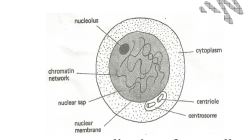
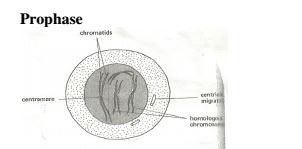
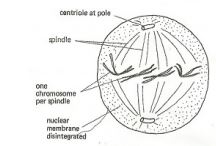
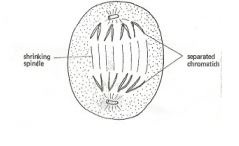
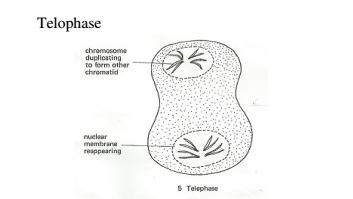
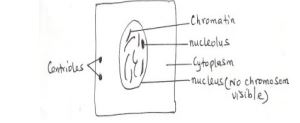
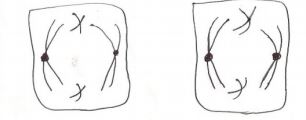





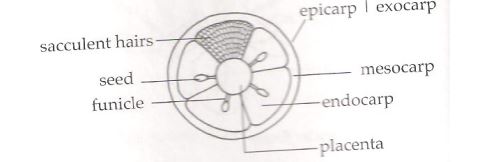
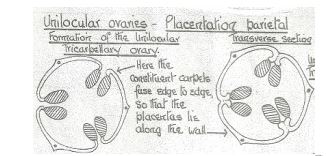
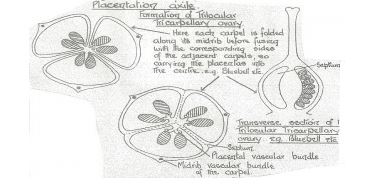
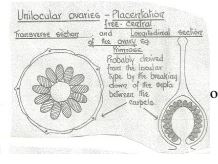
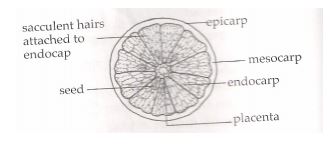

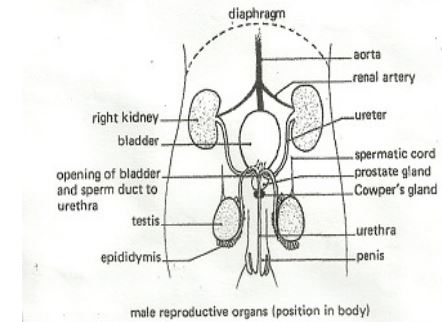
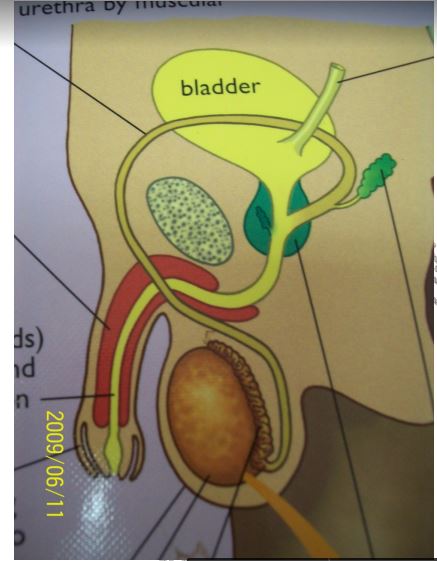
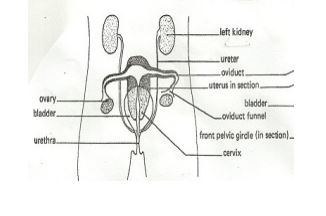
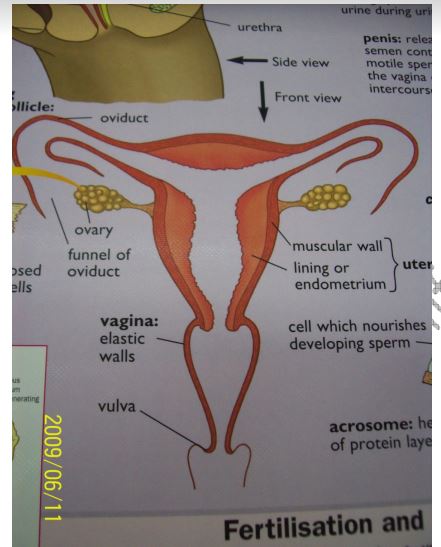
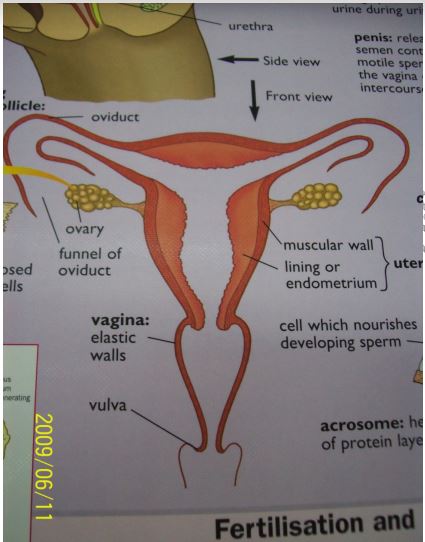
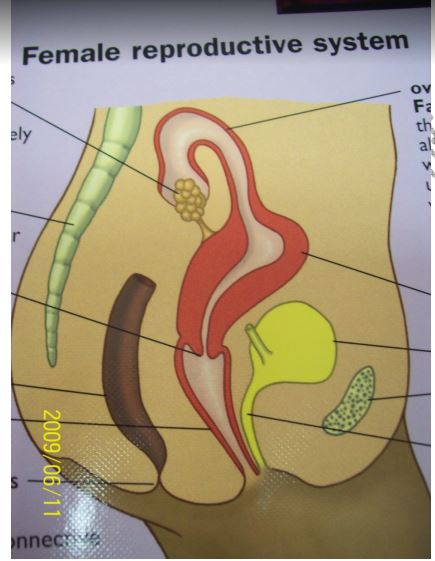

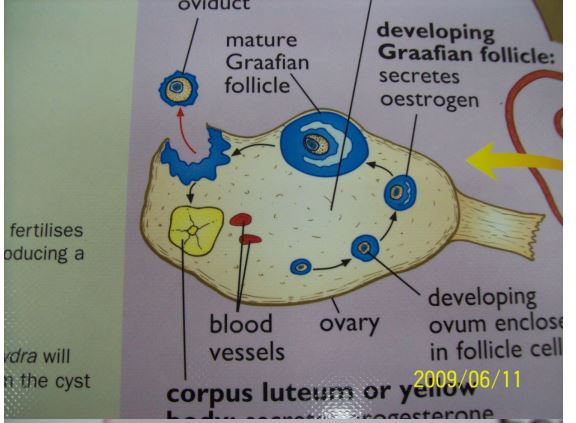
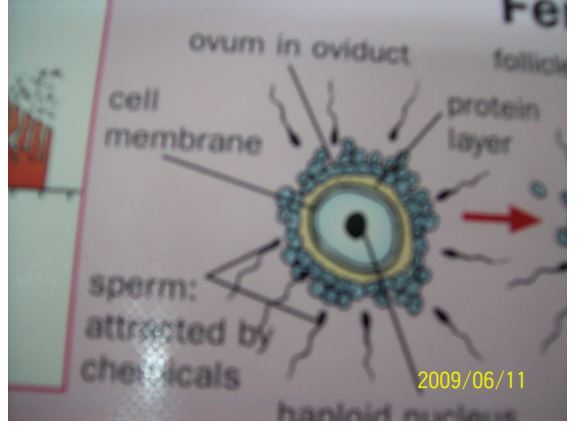
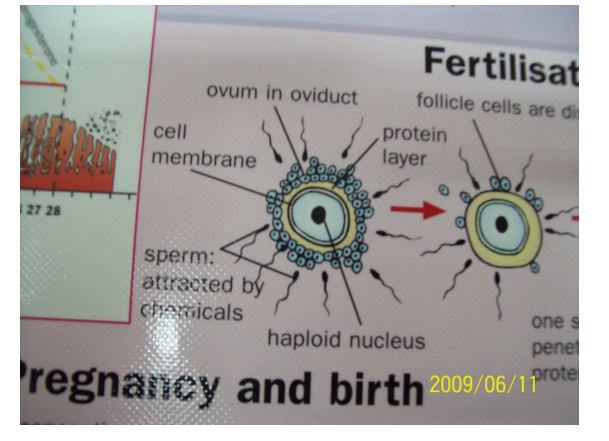
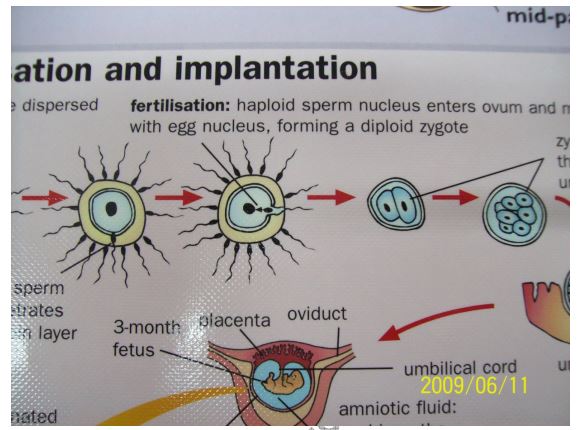
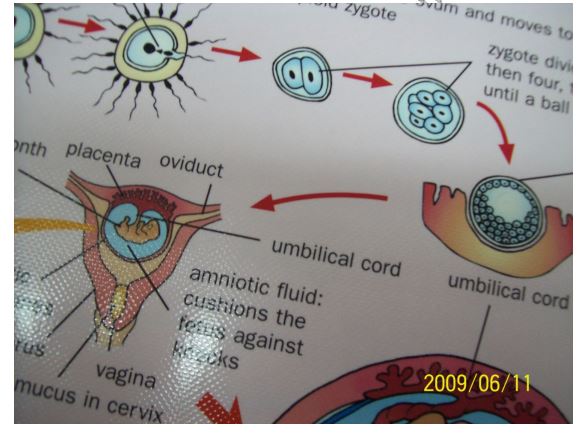
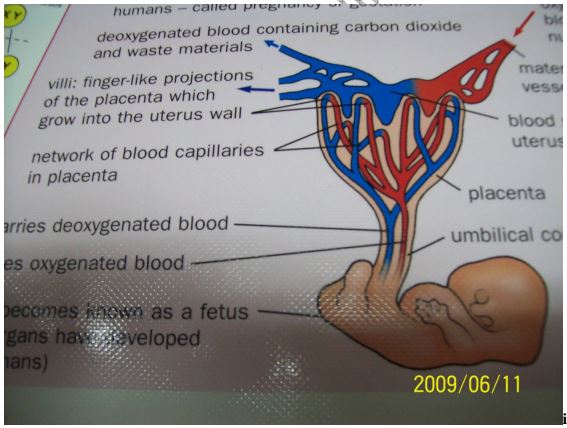
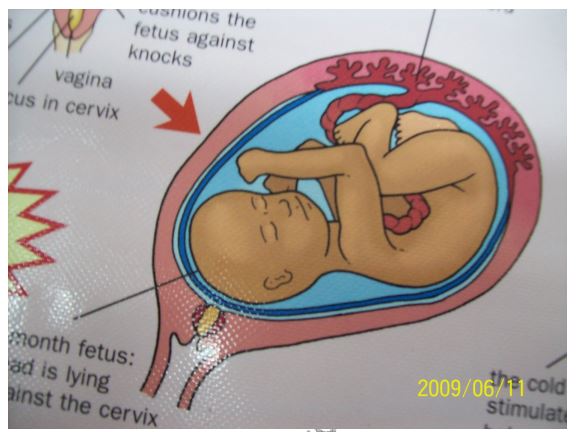
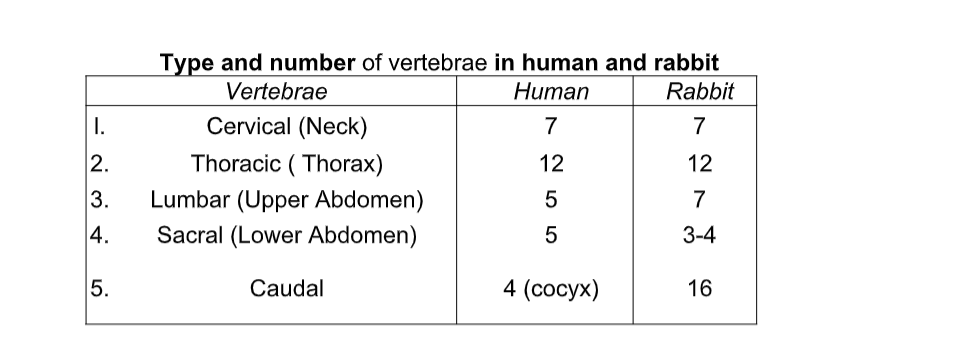



No comments